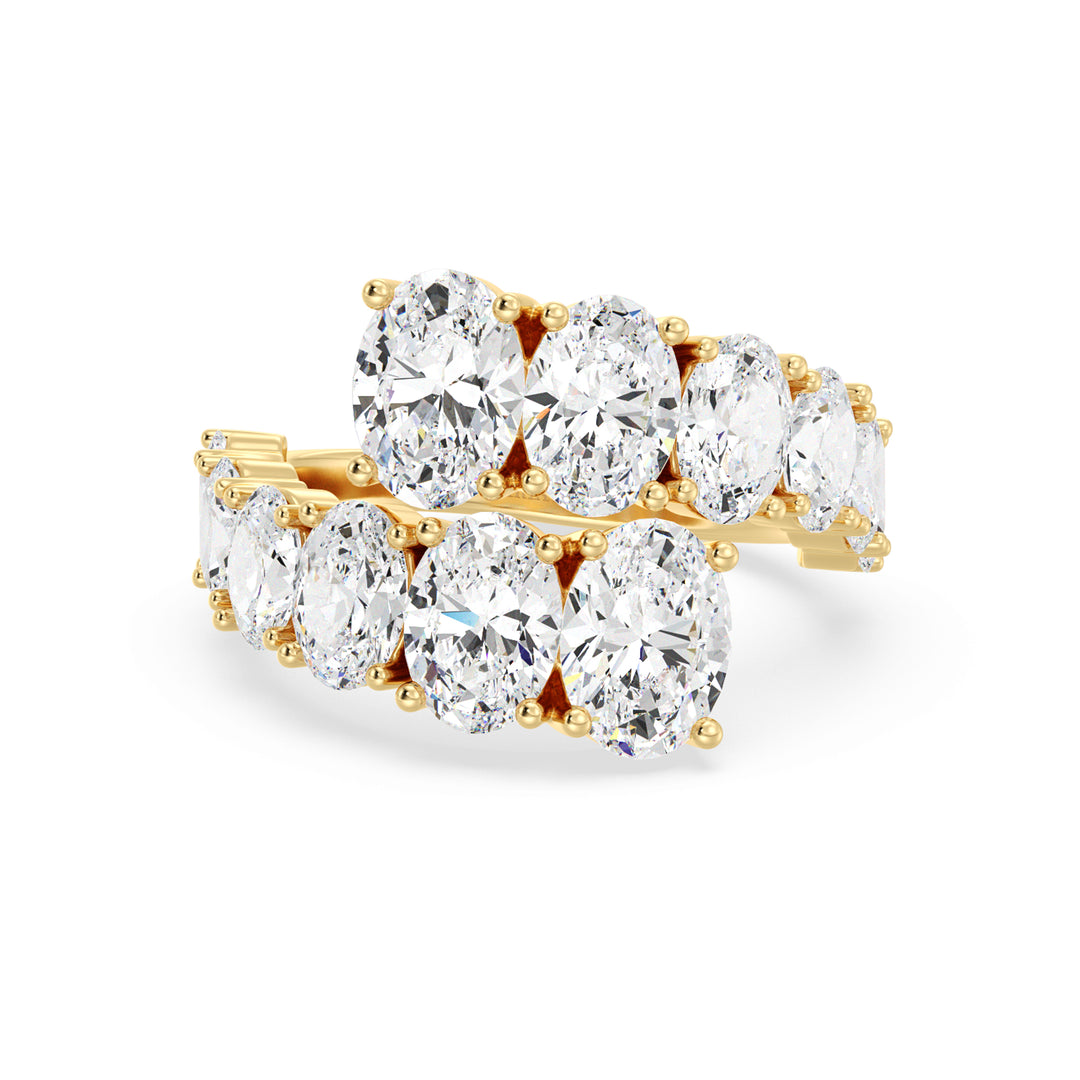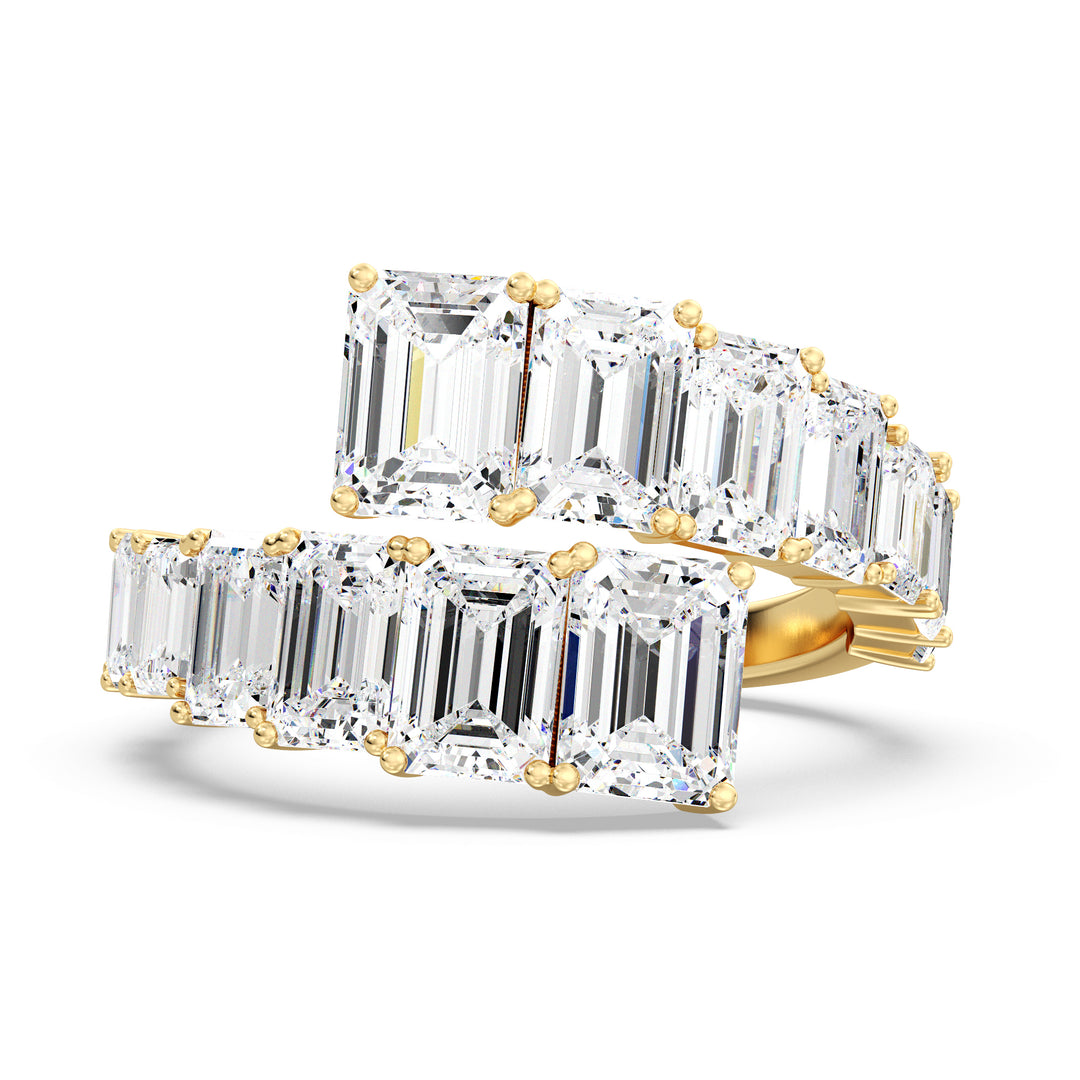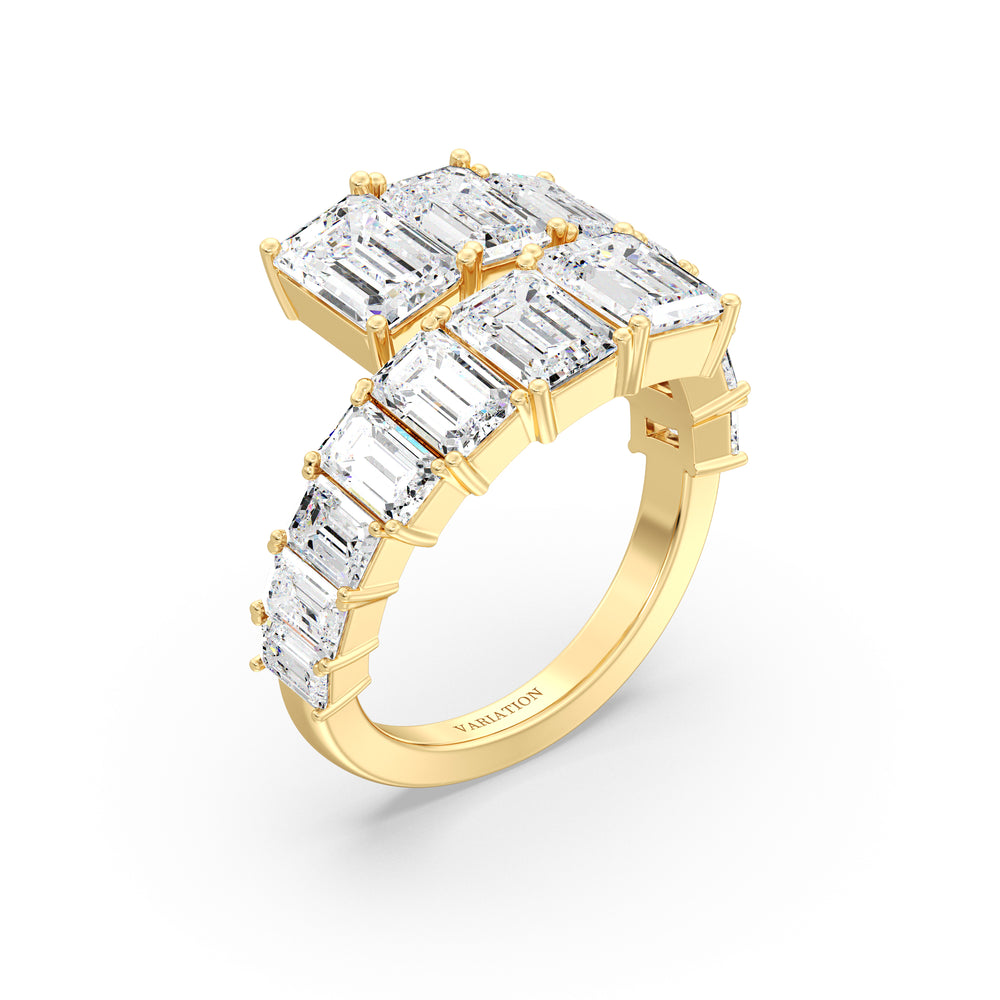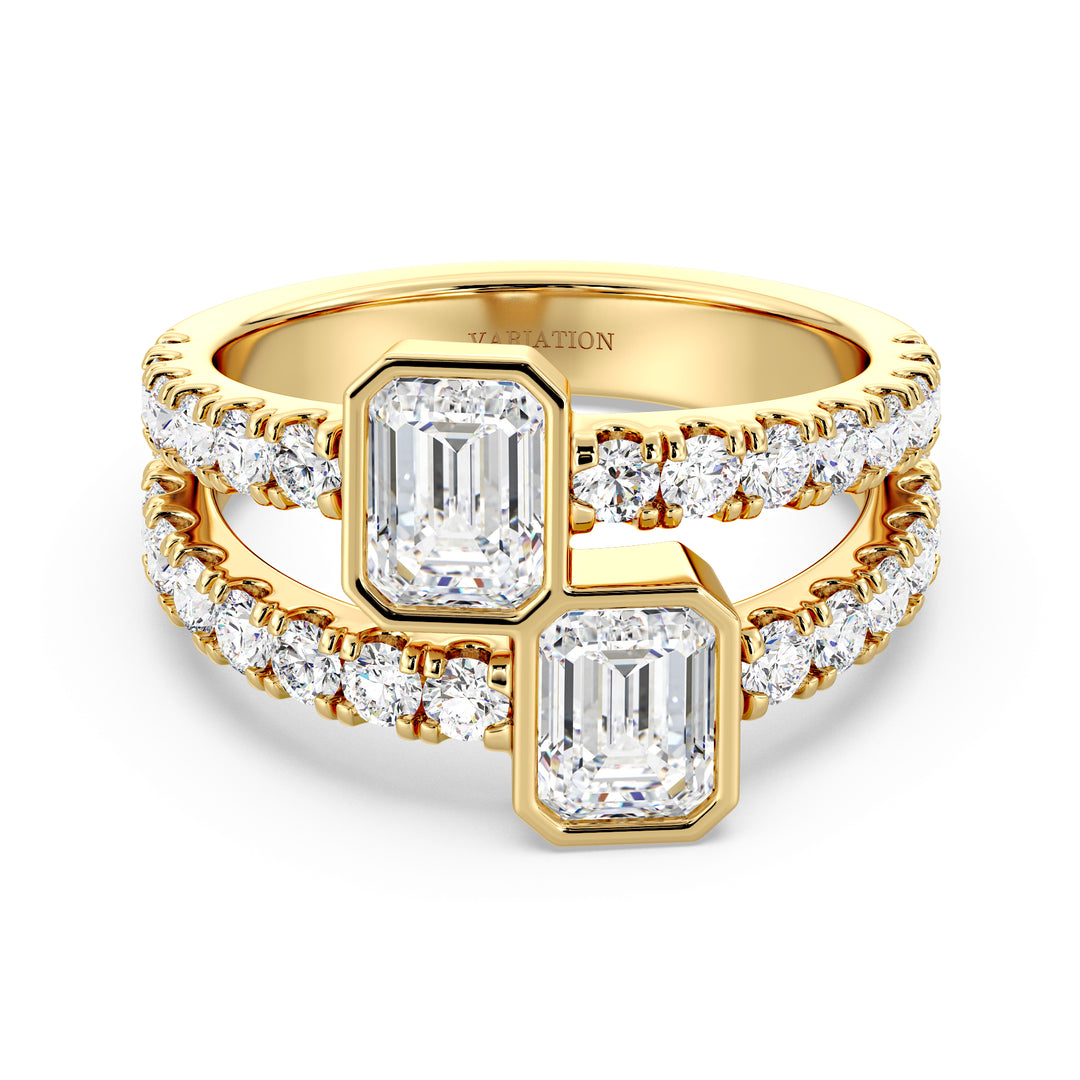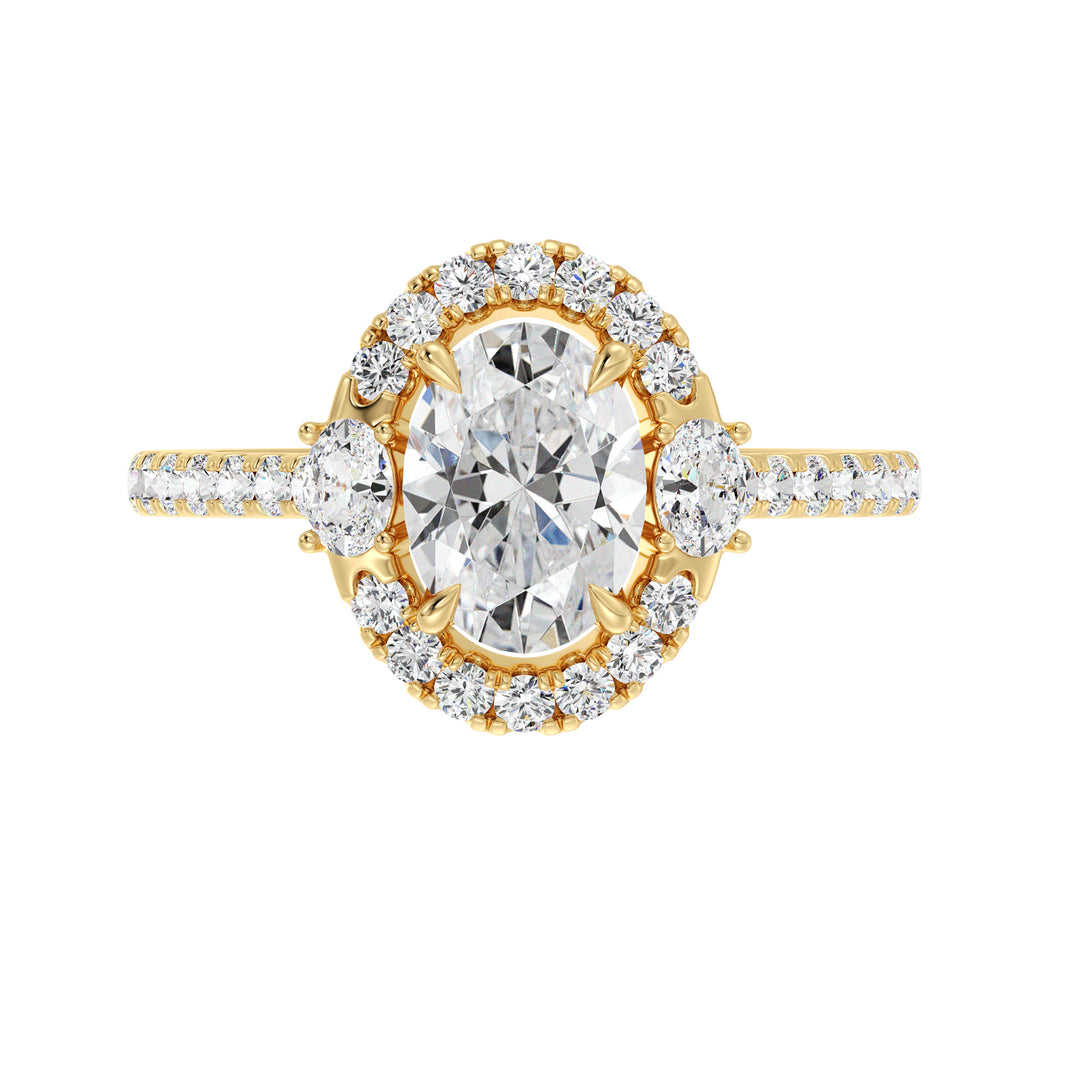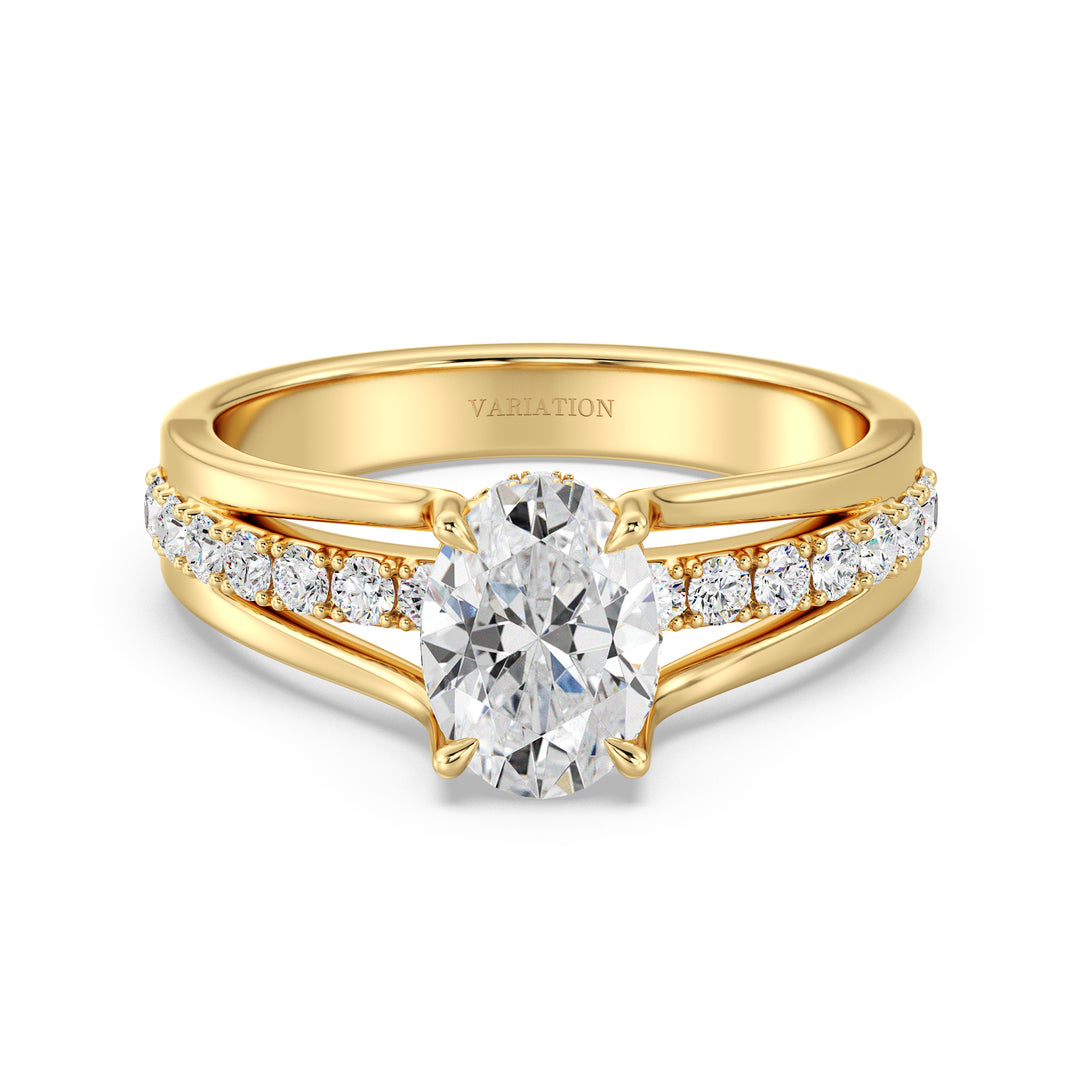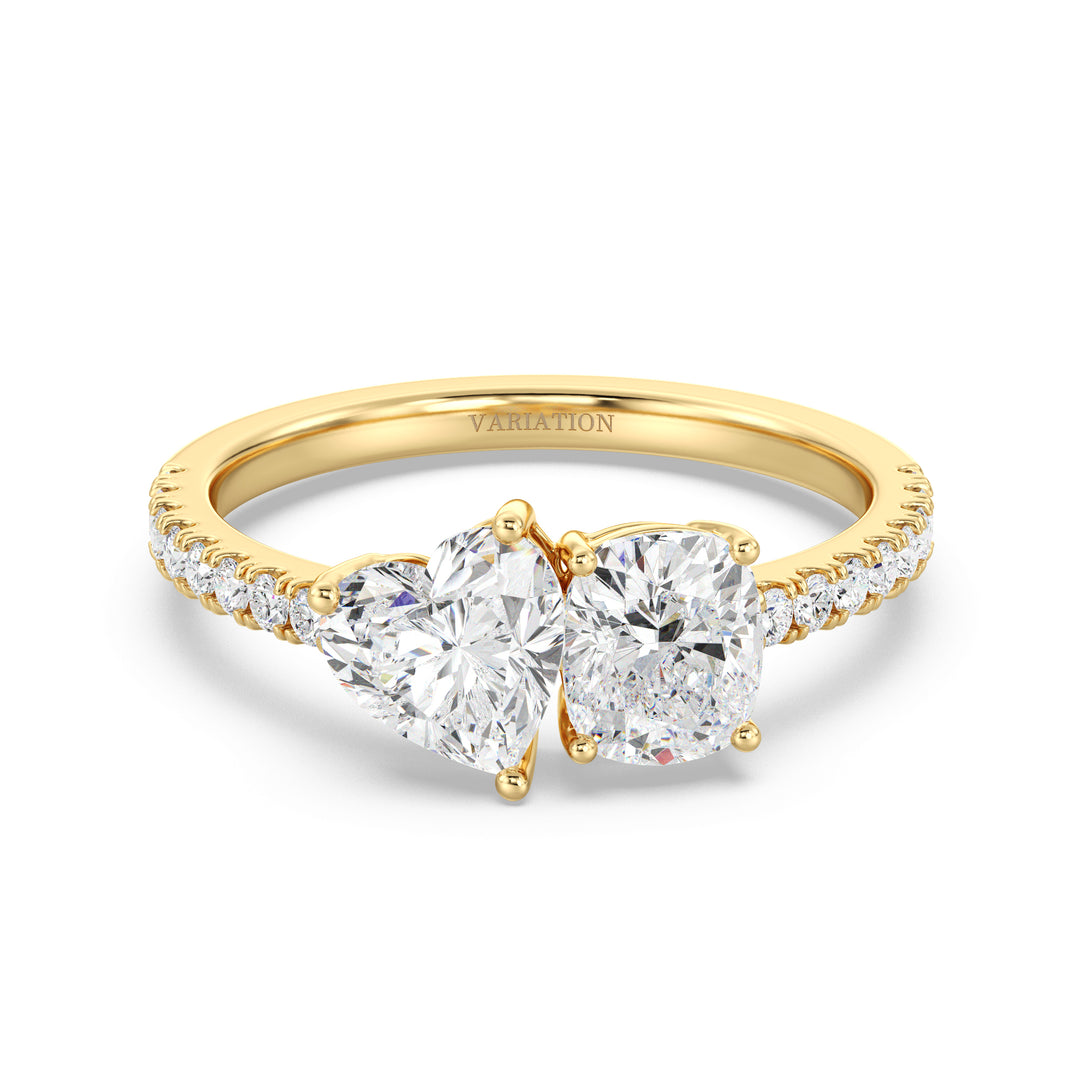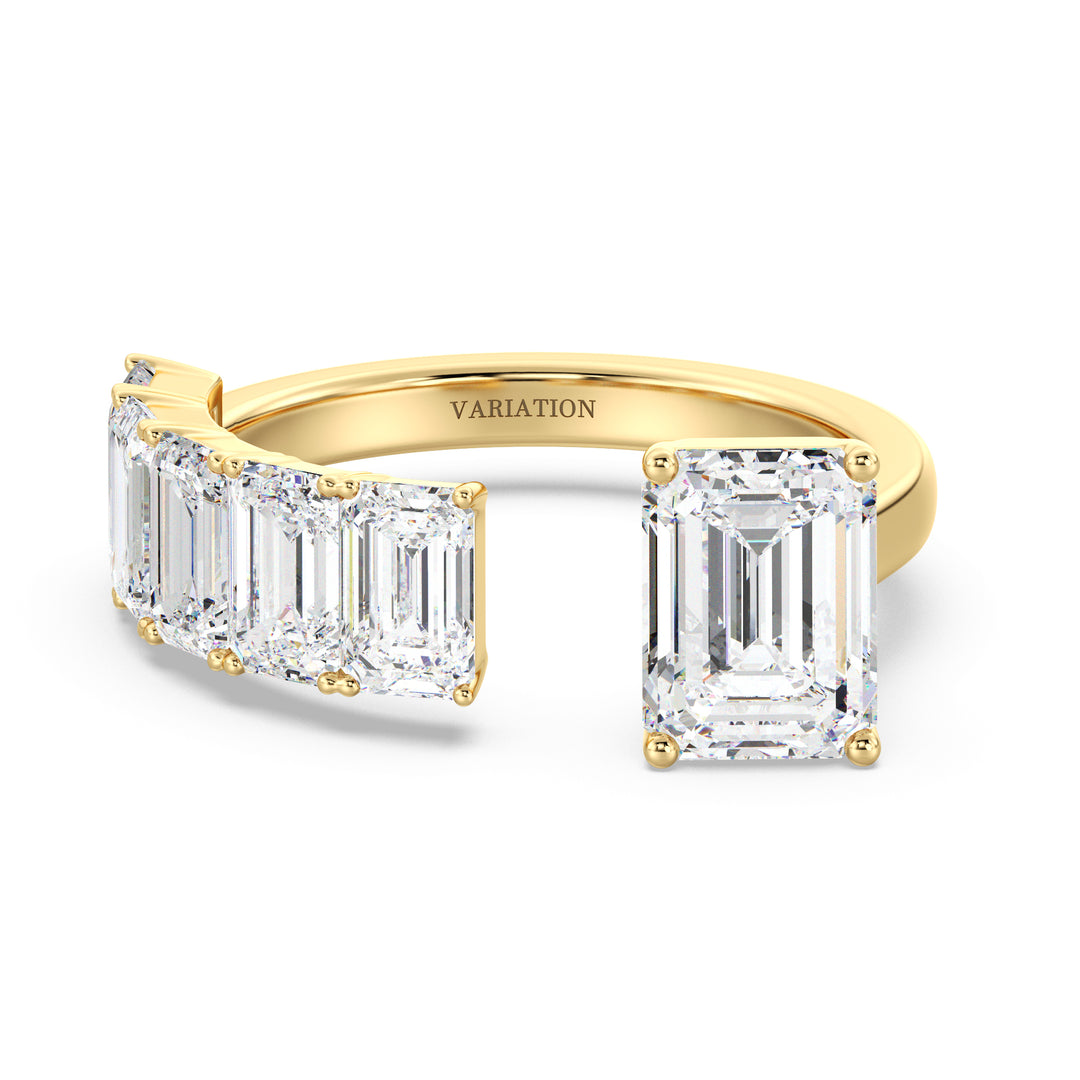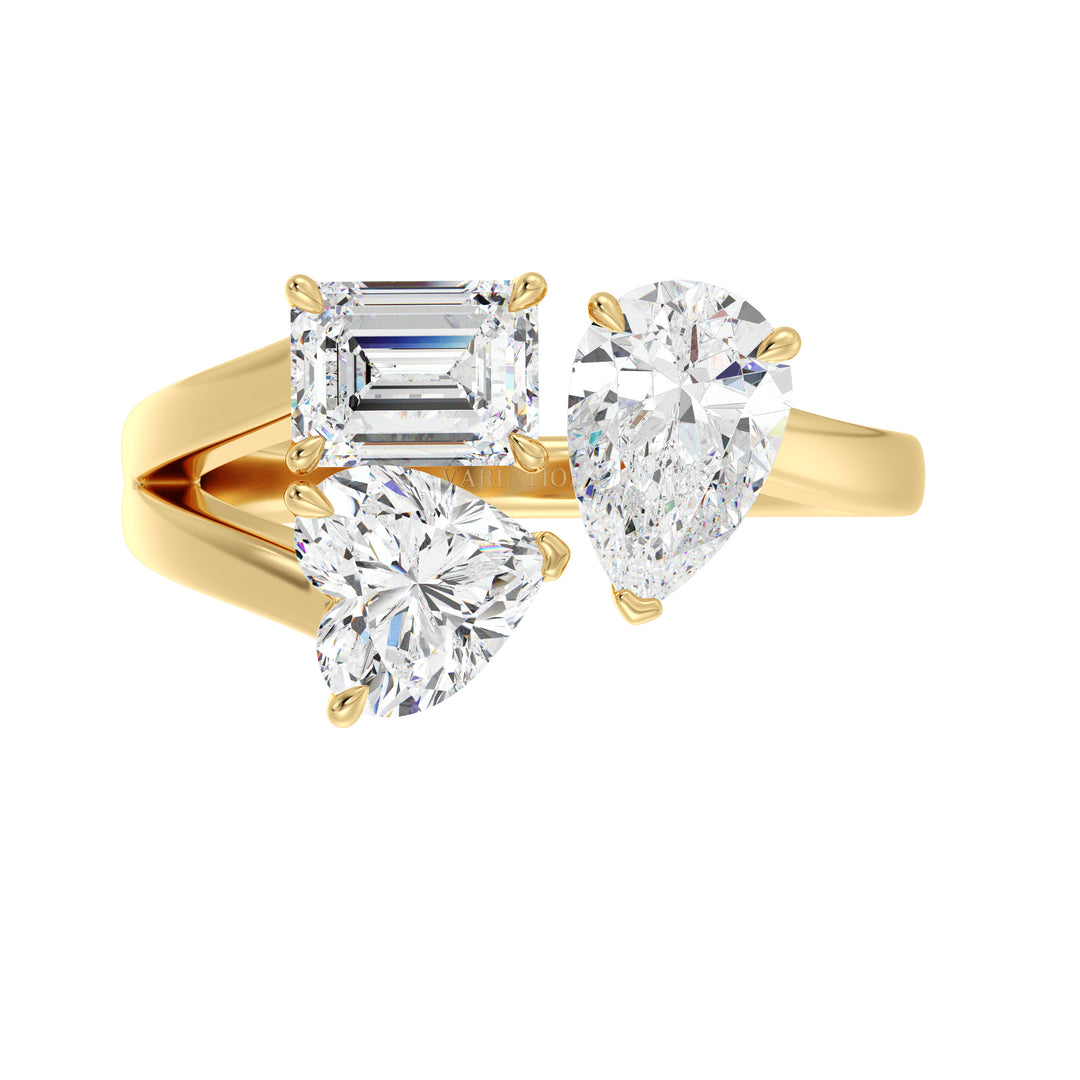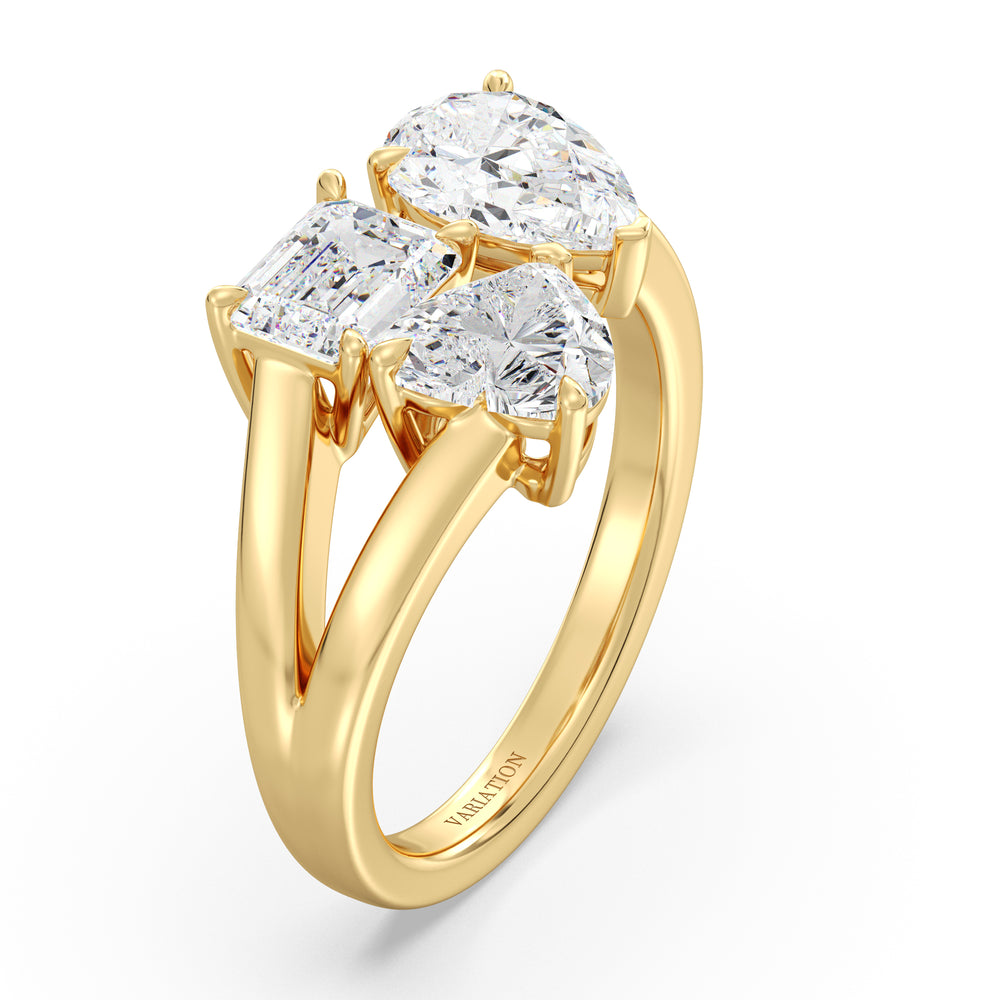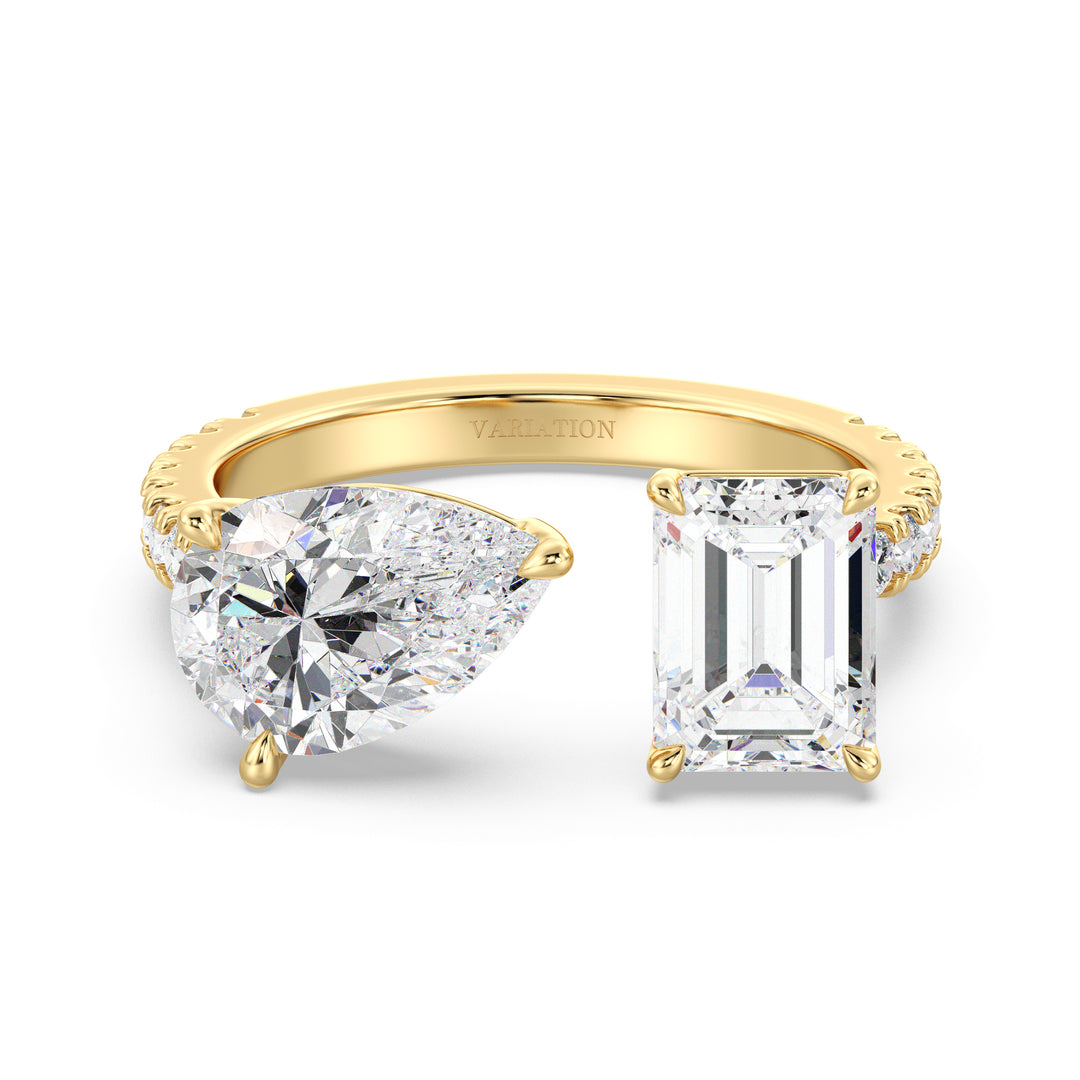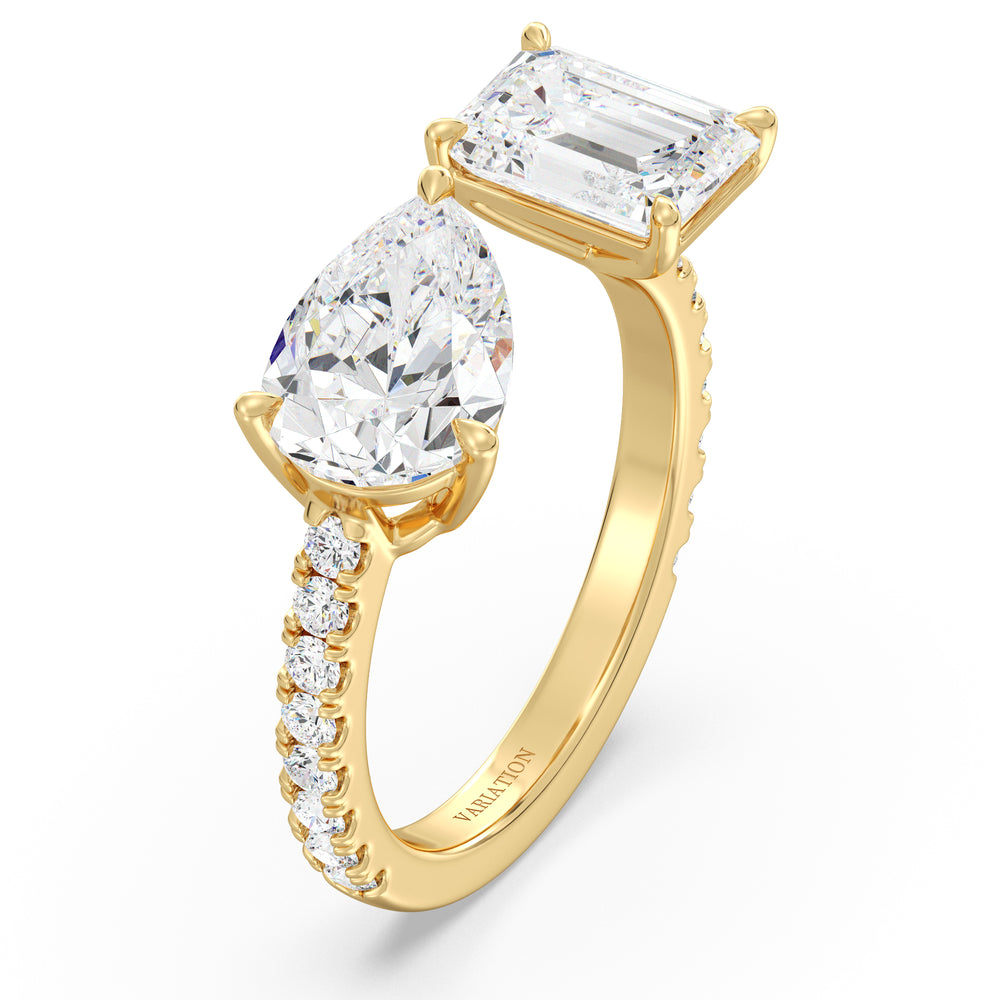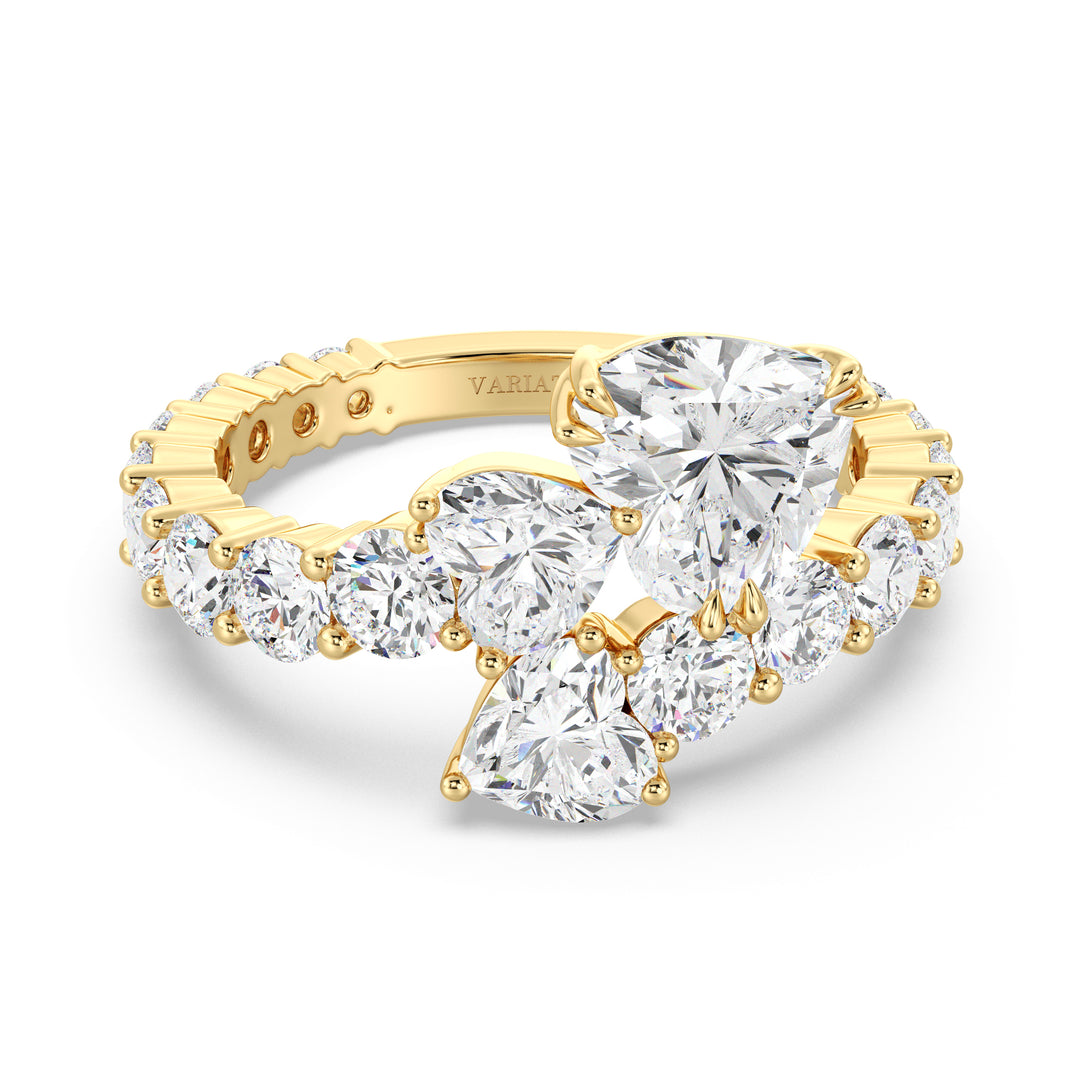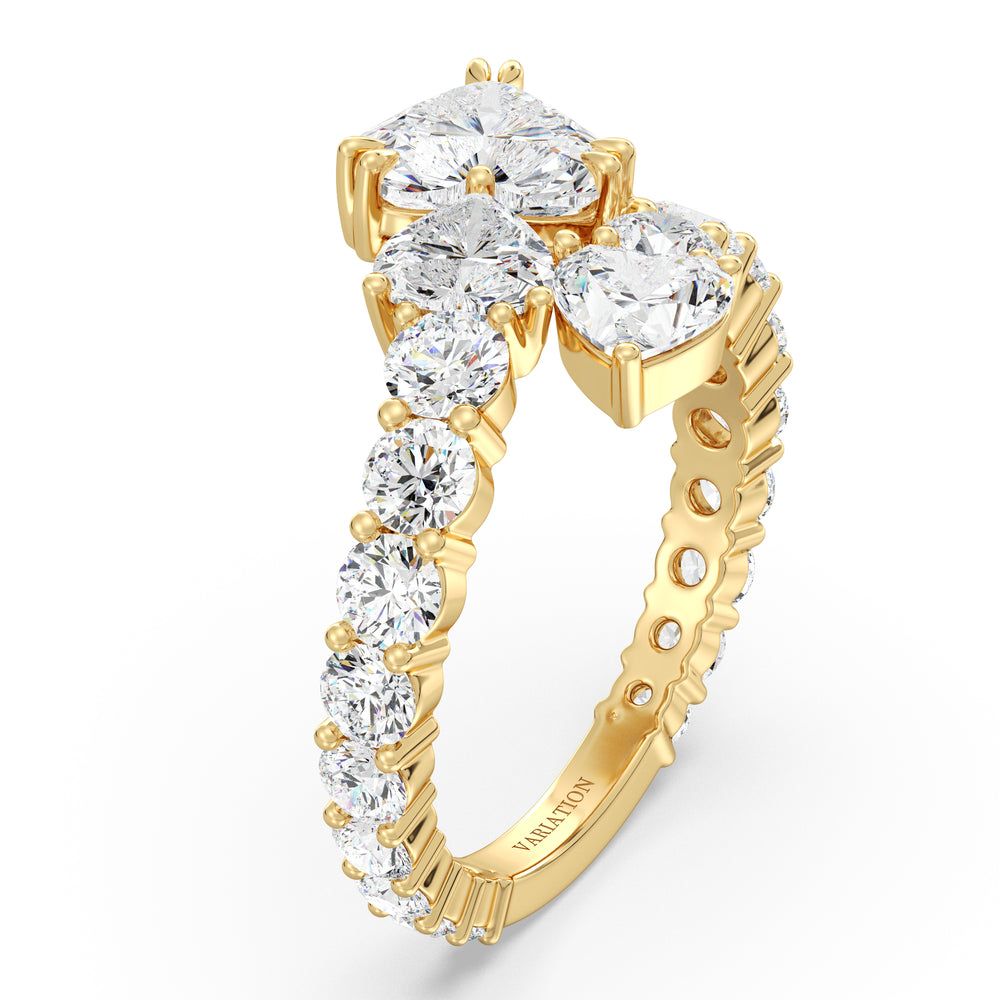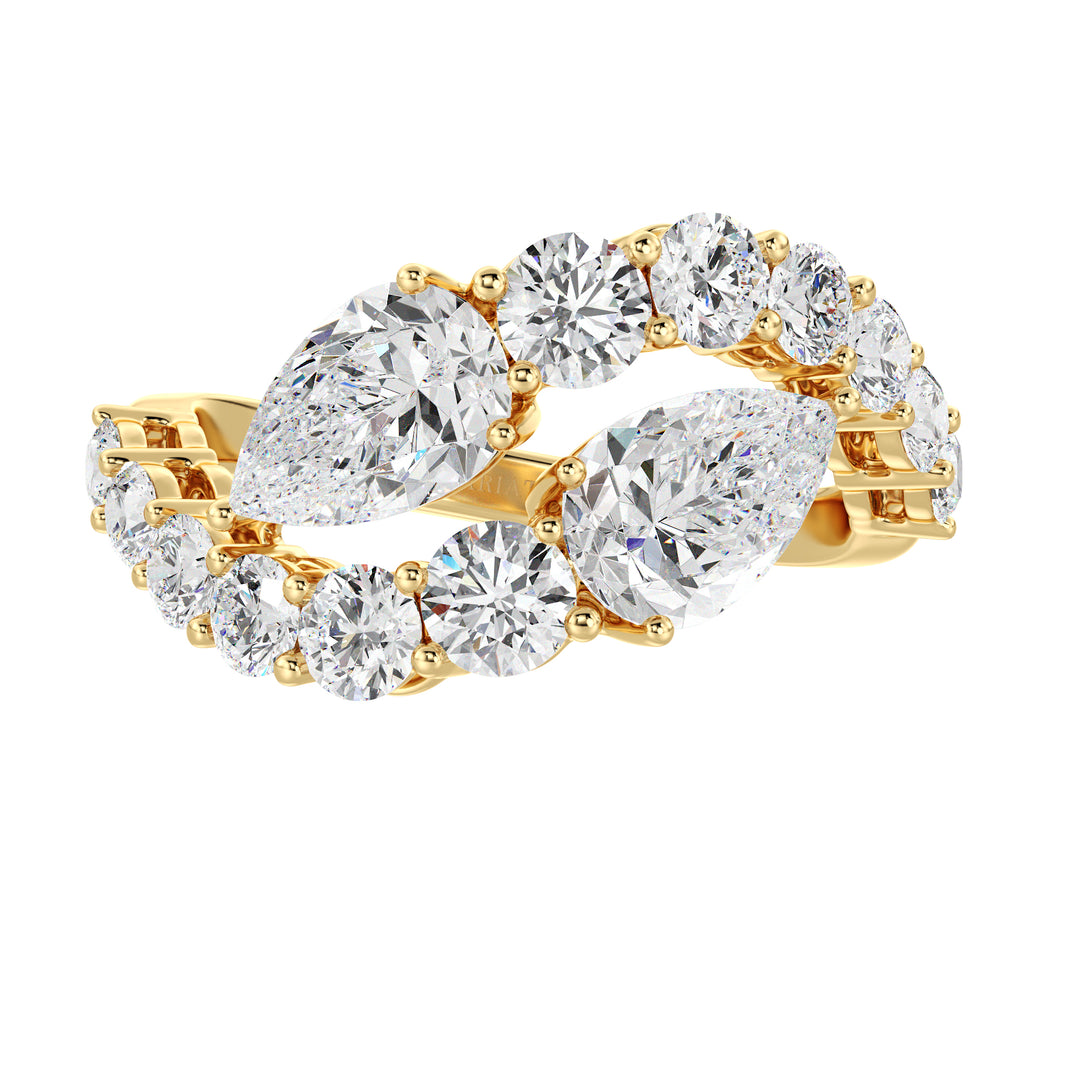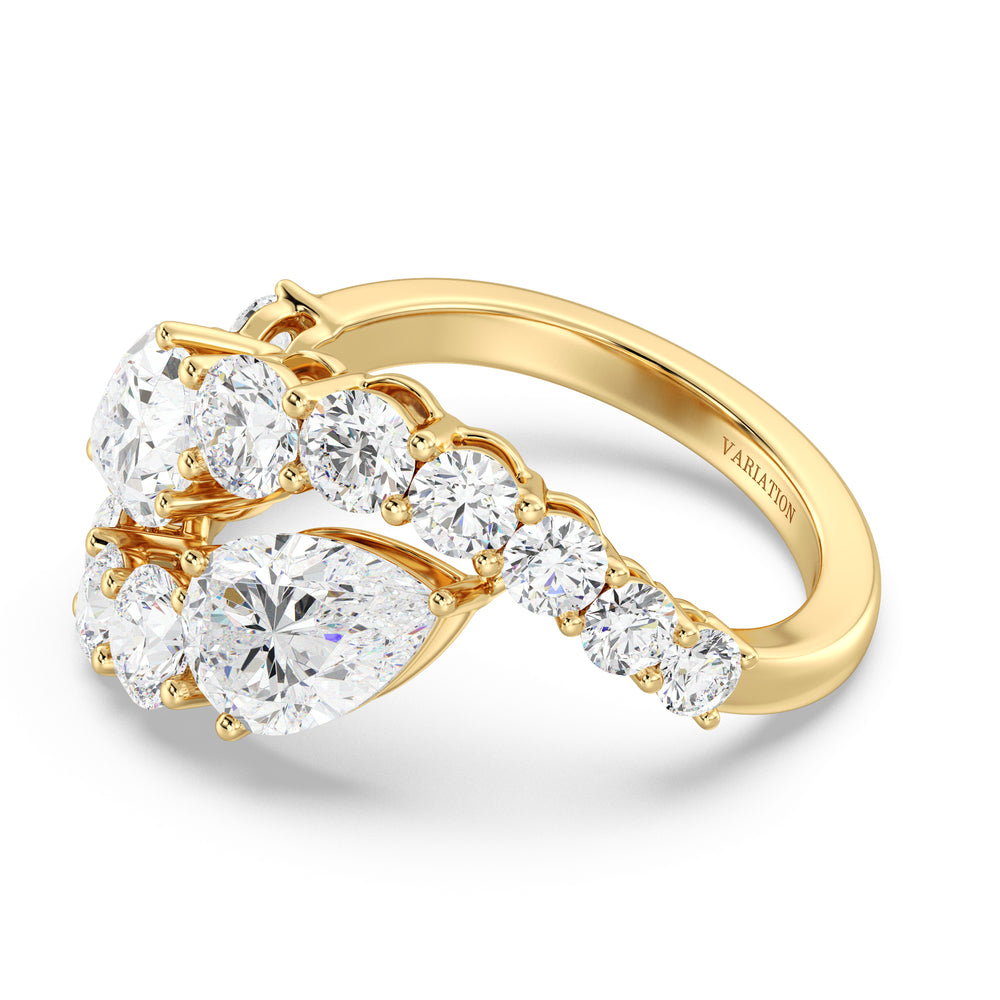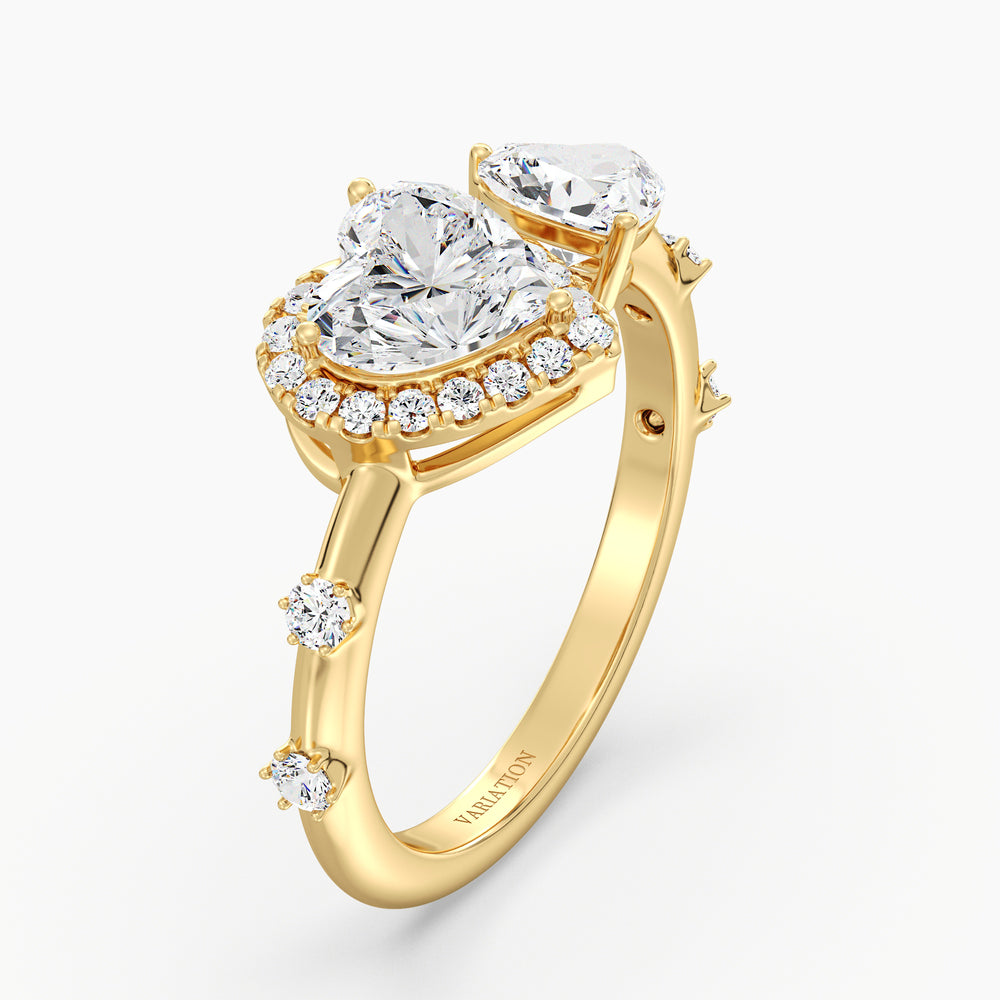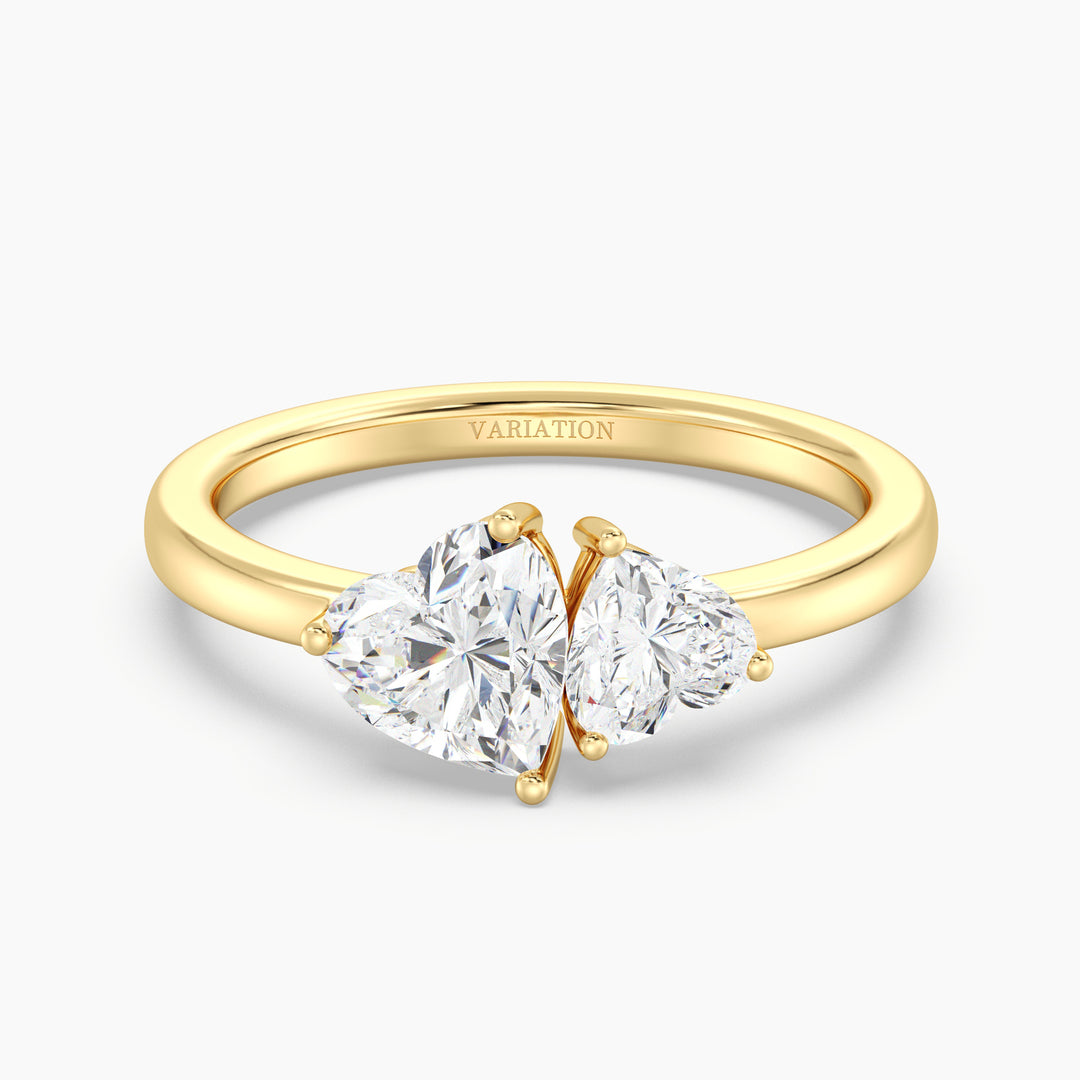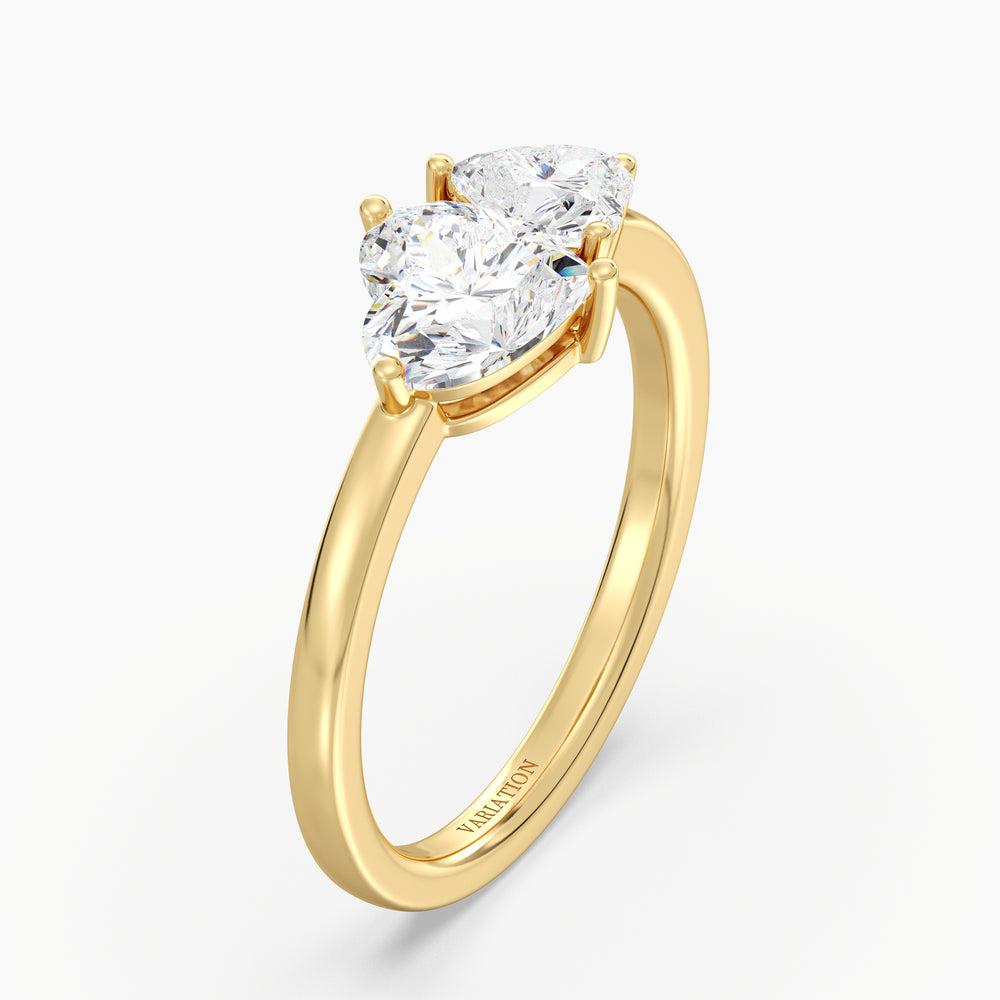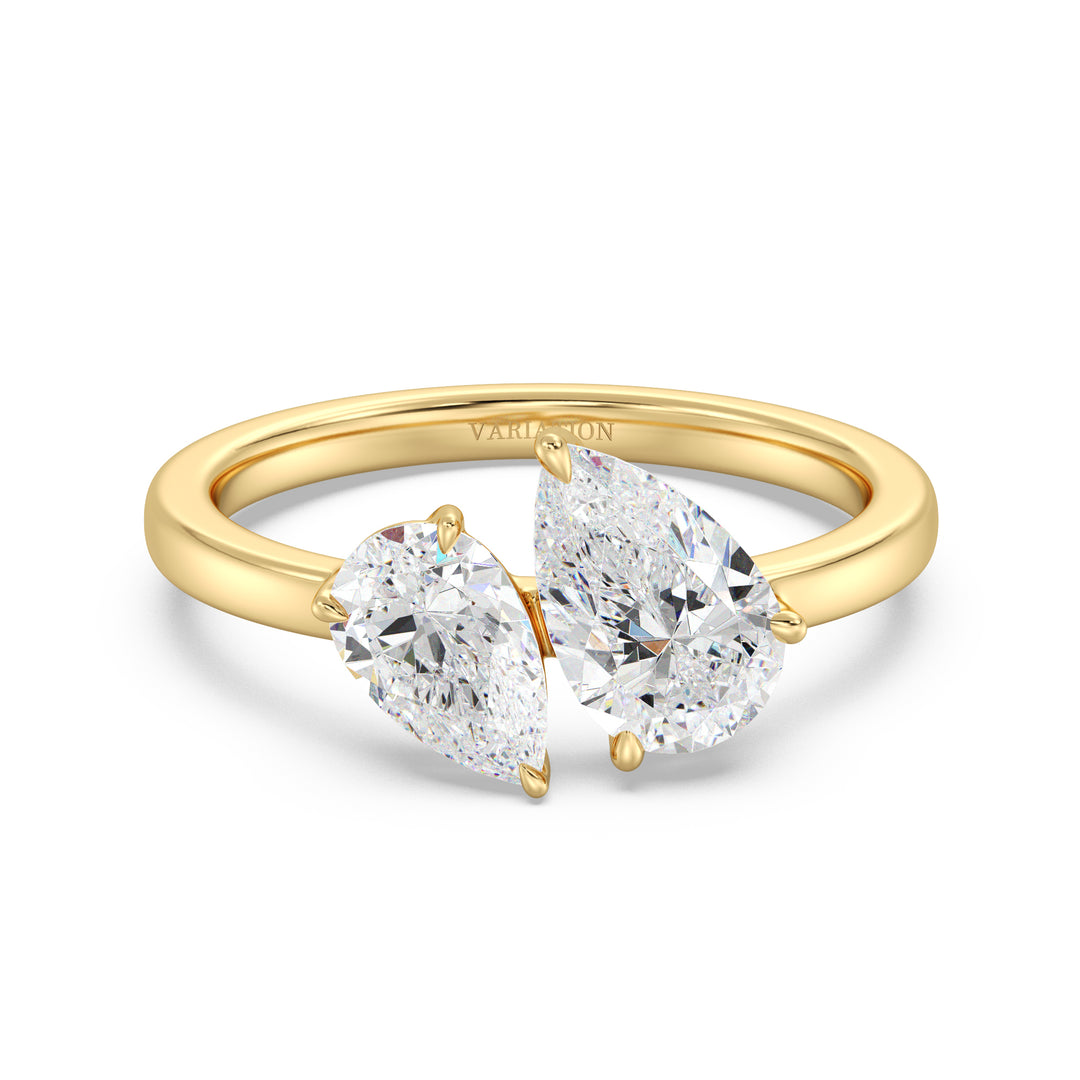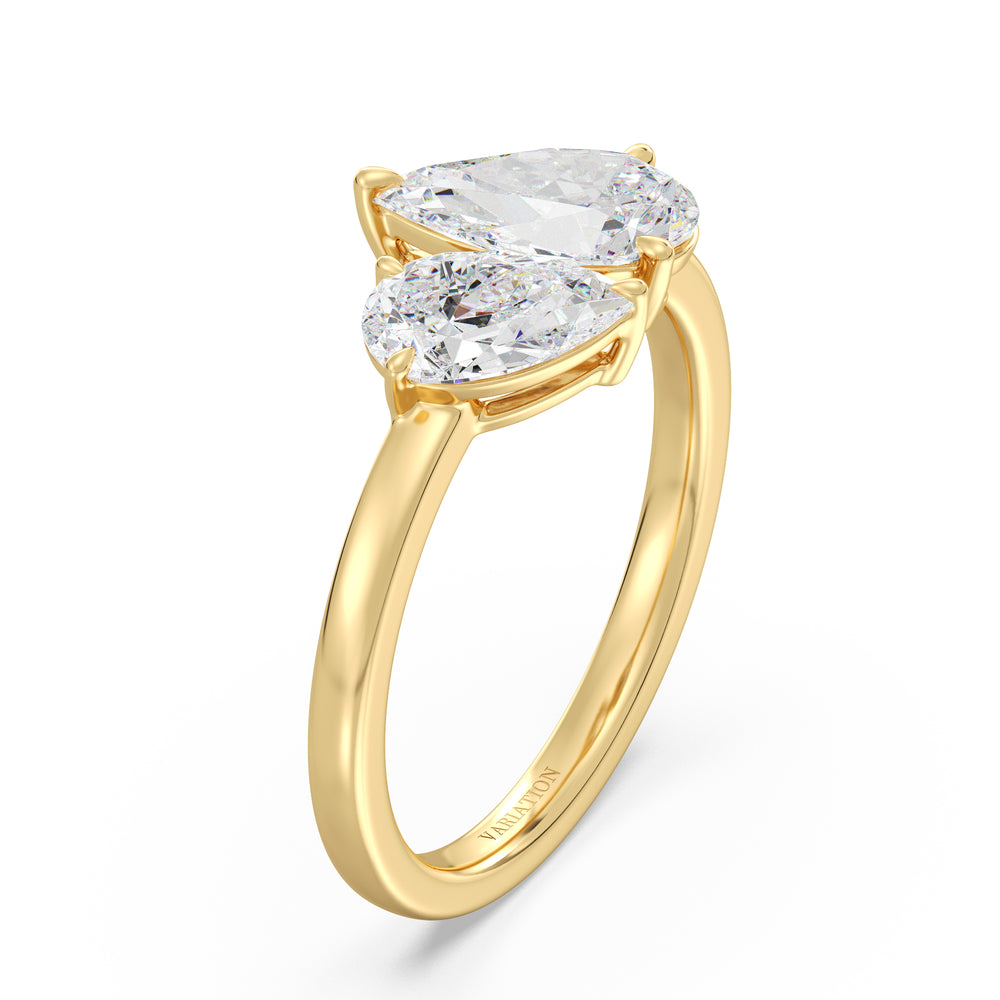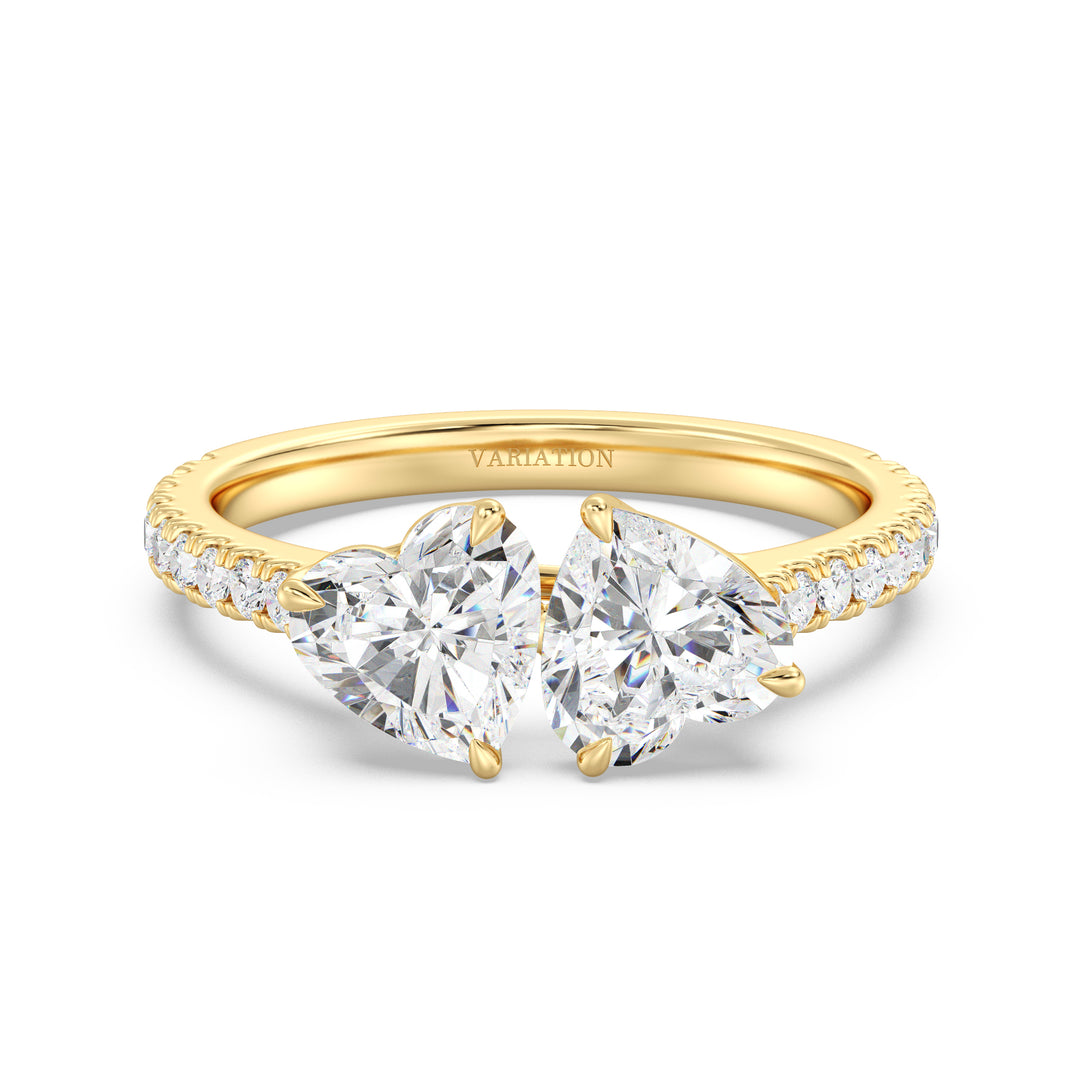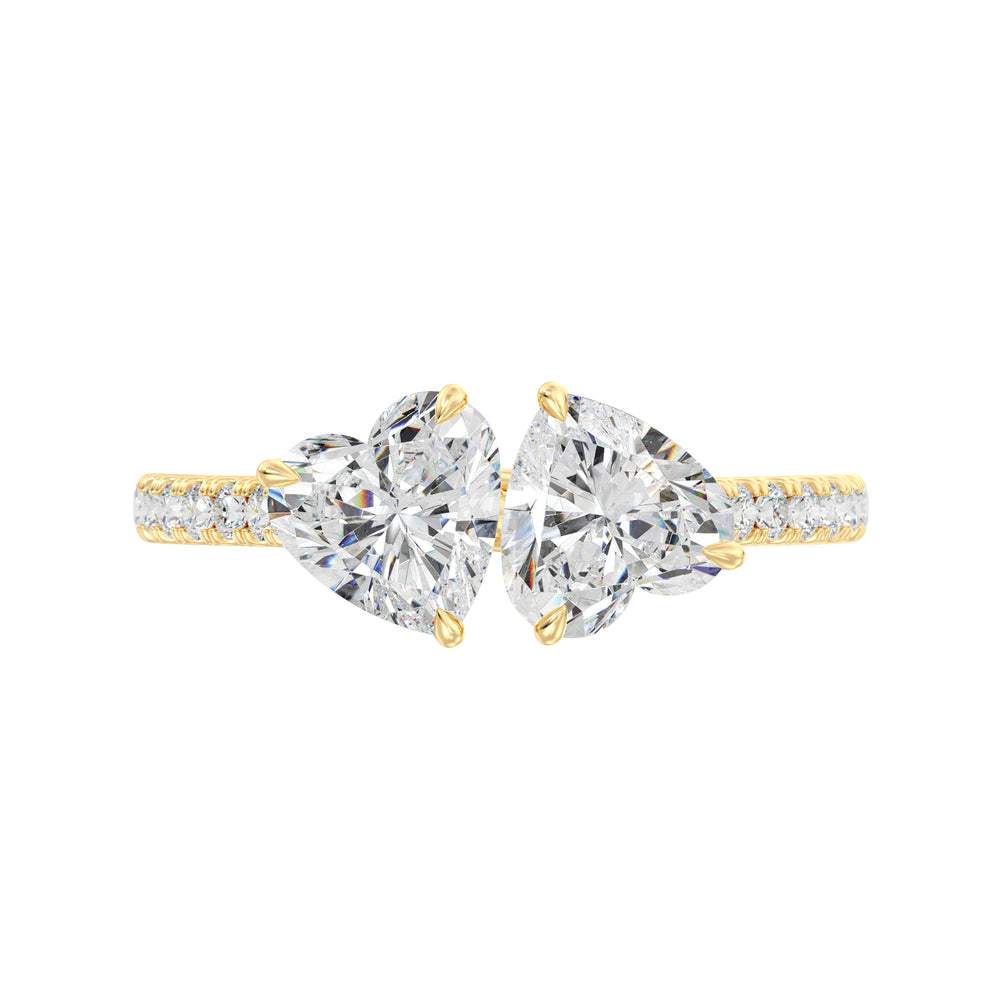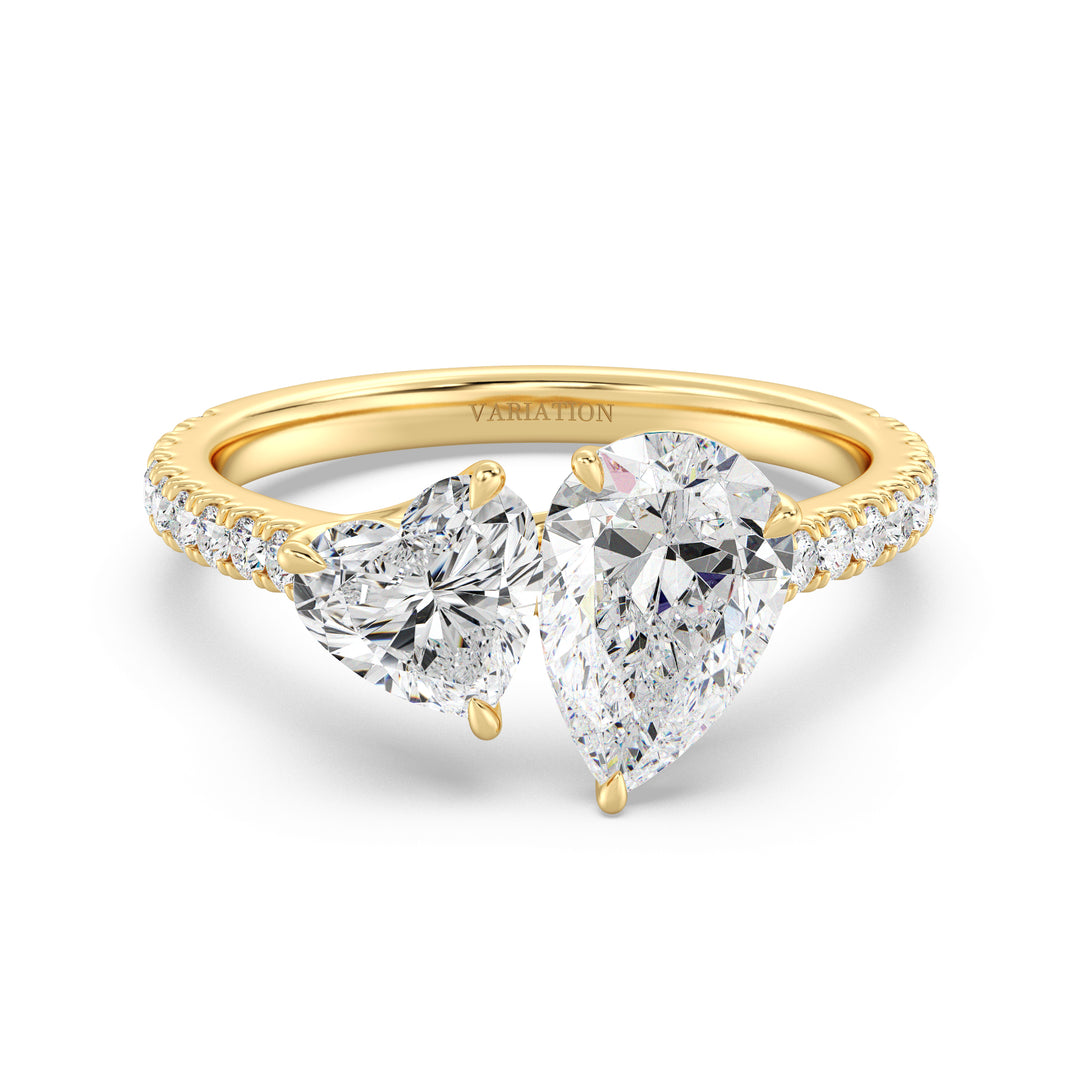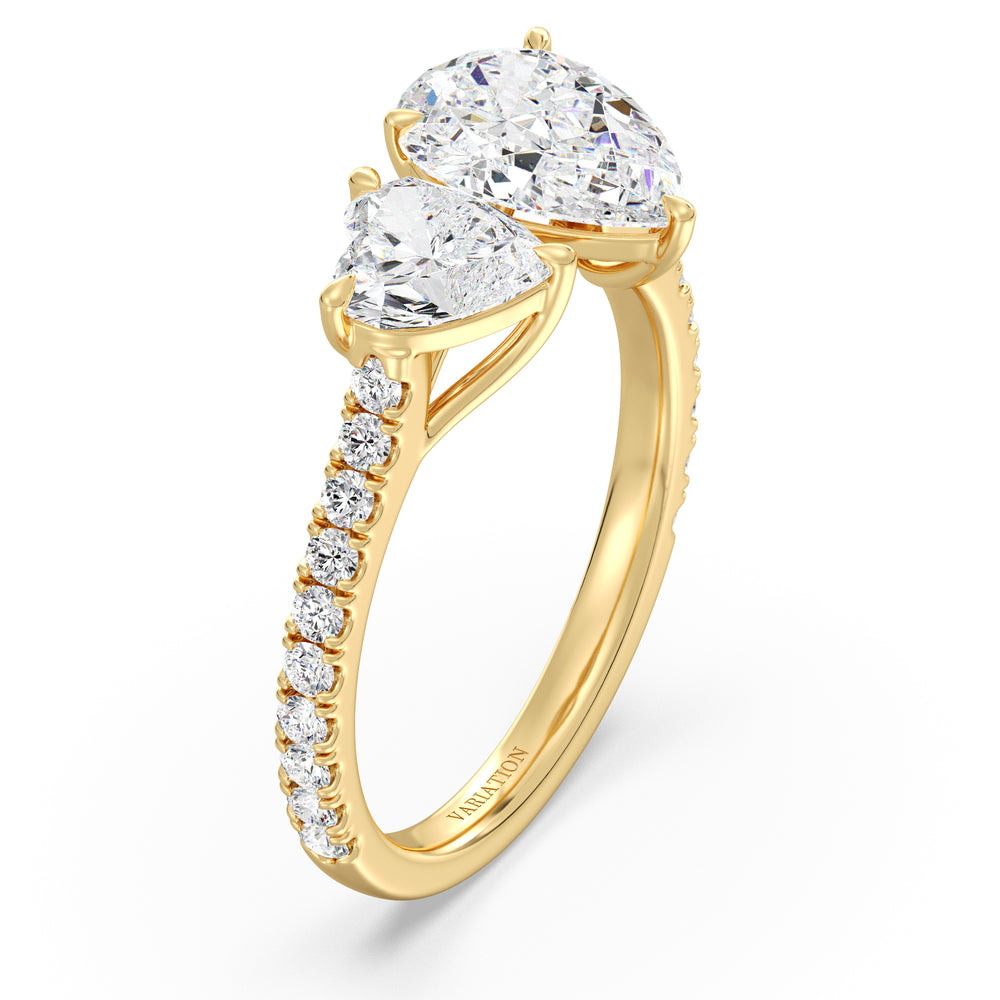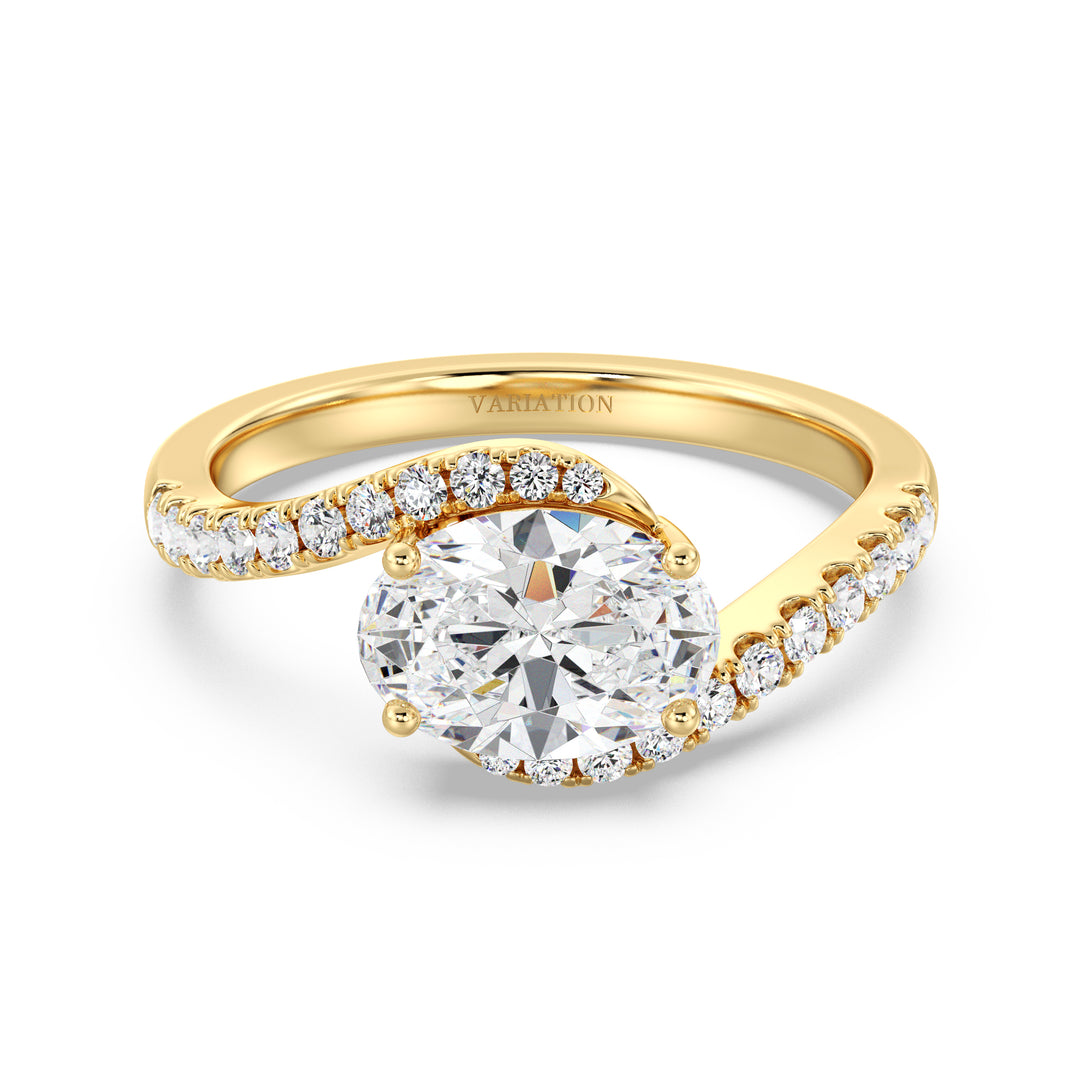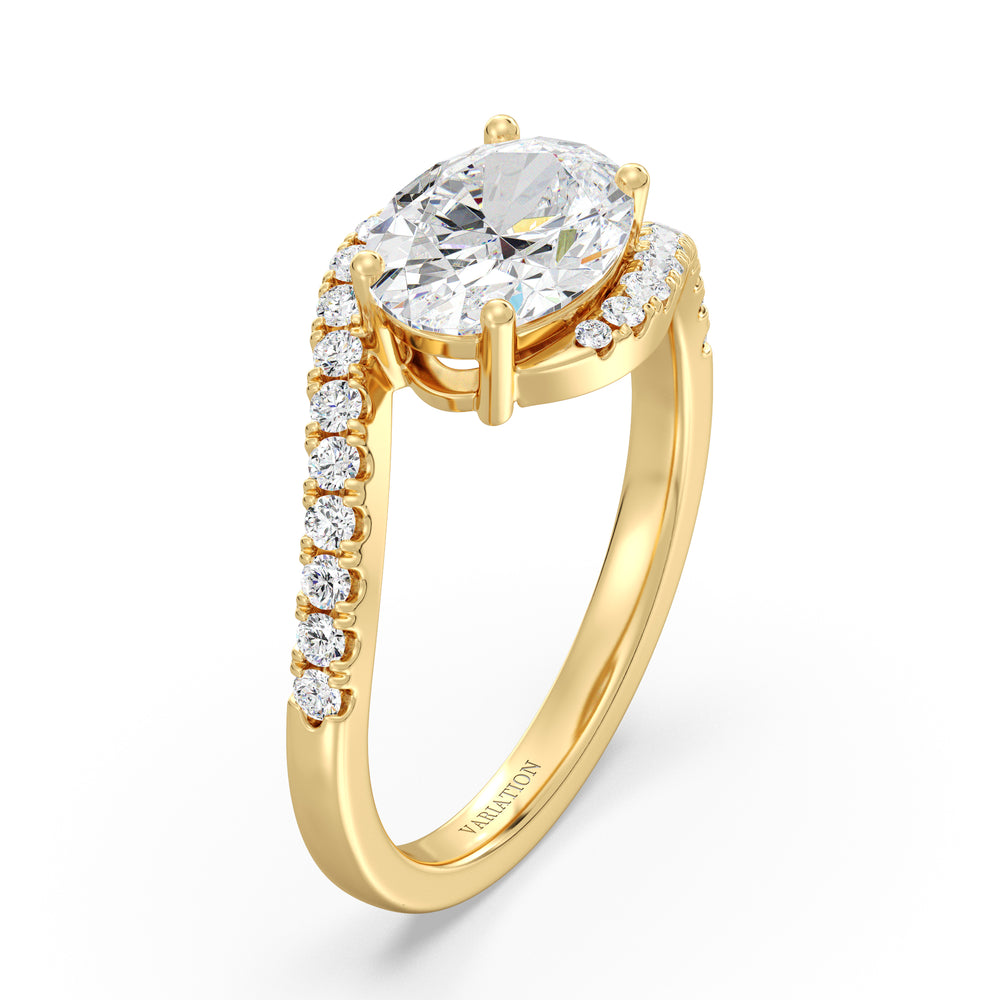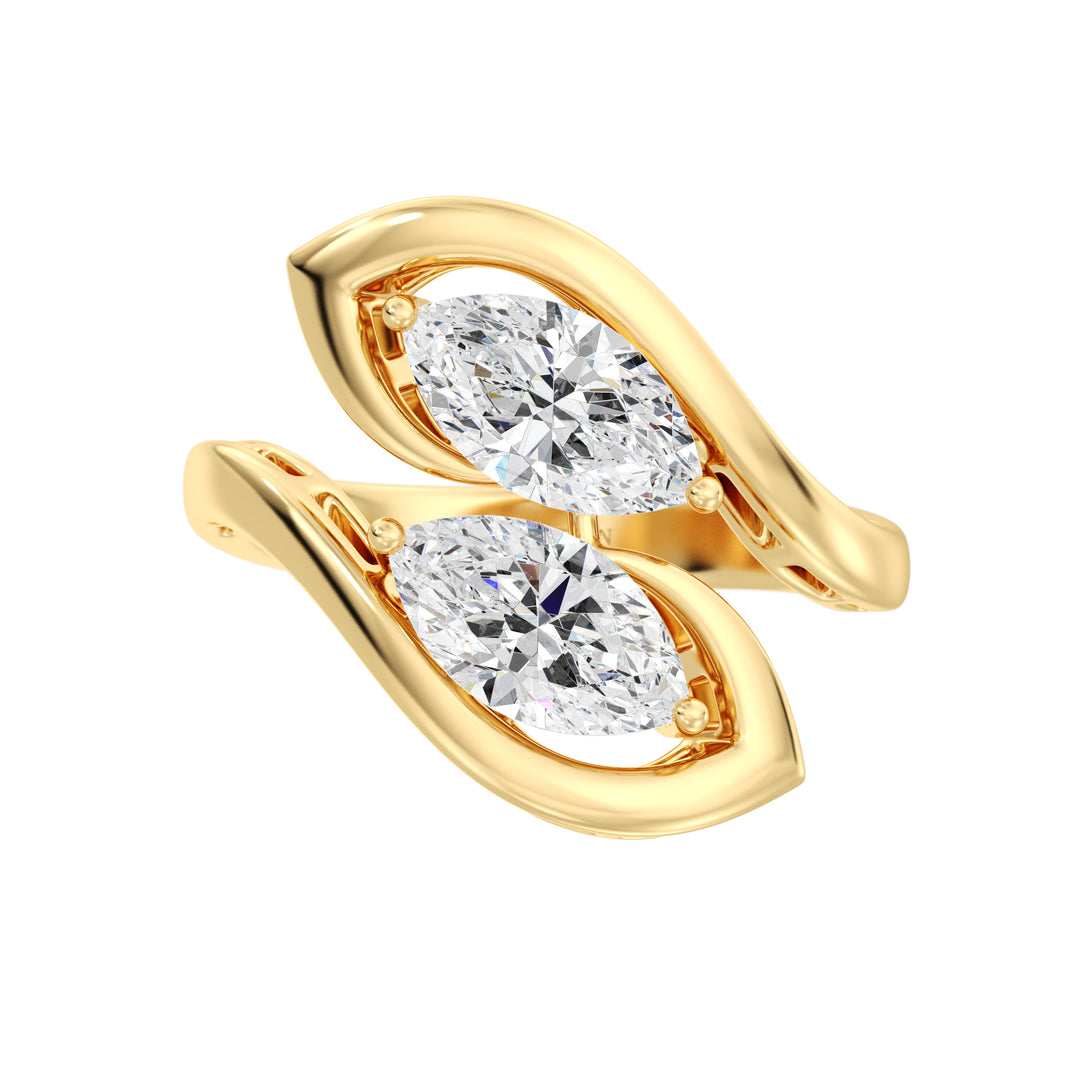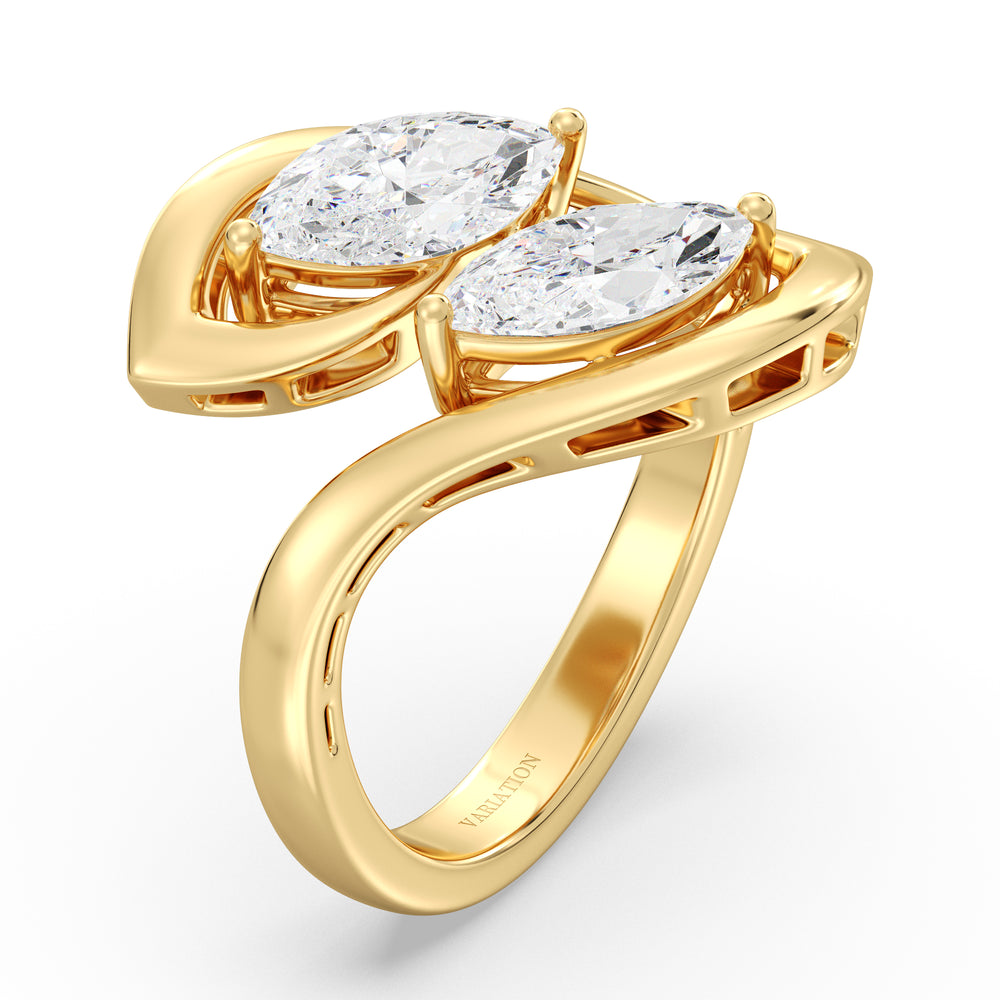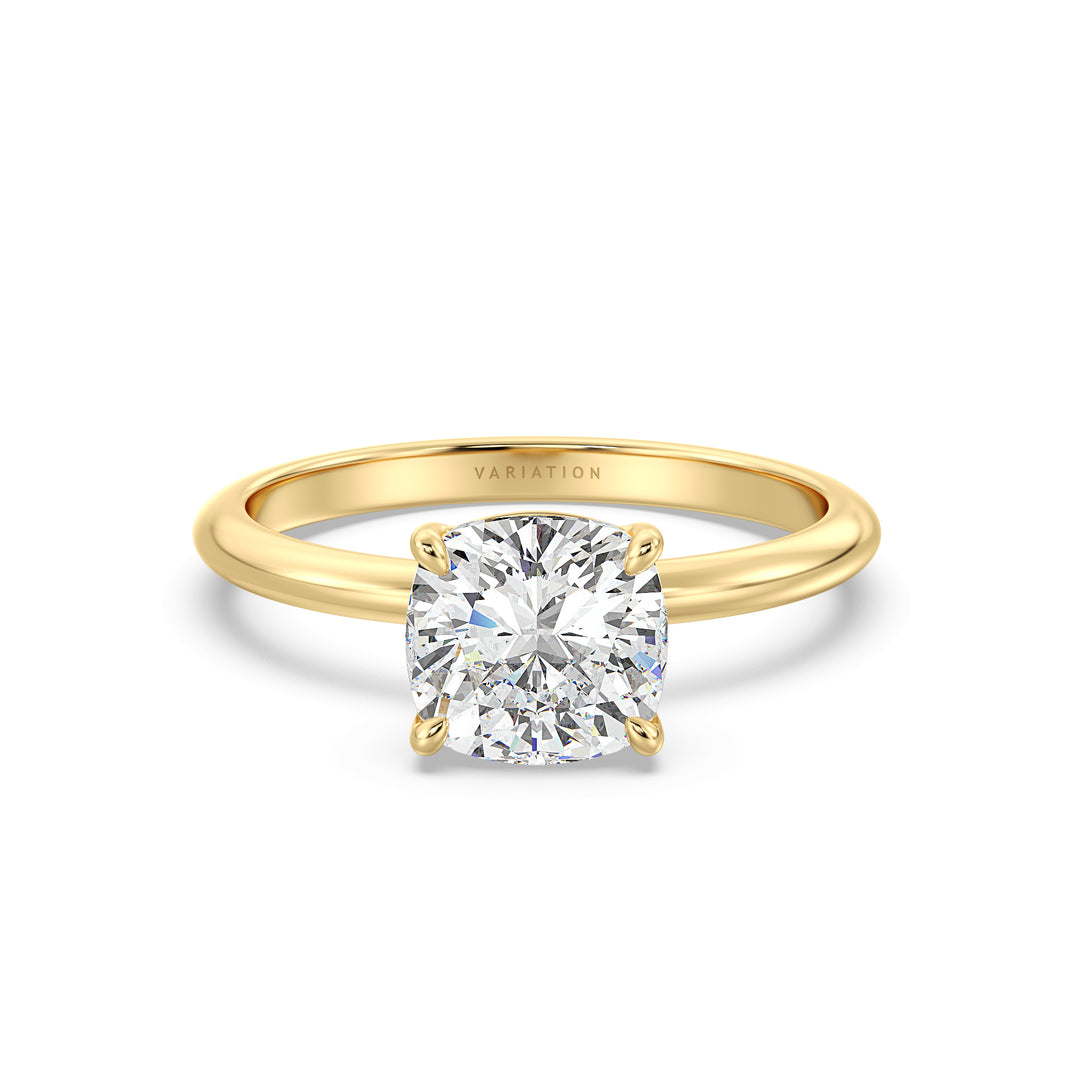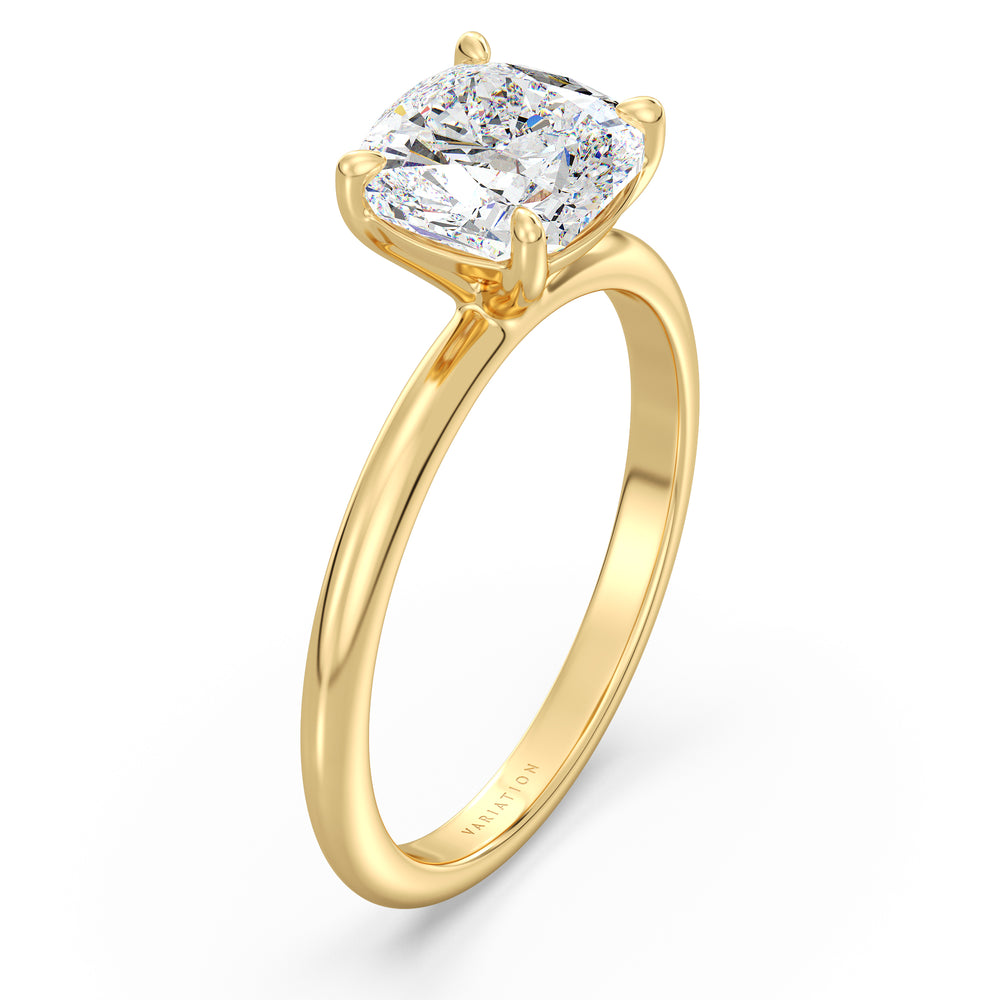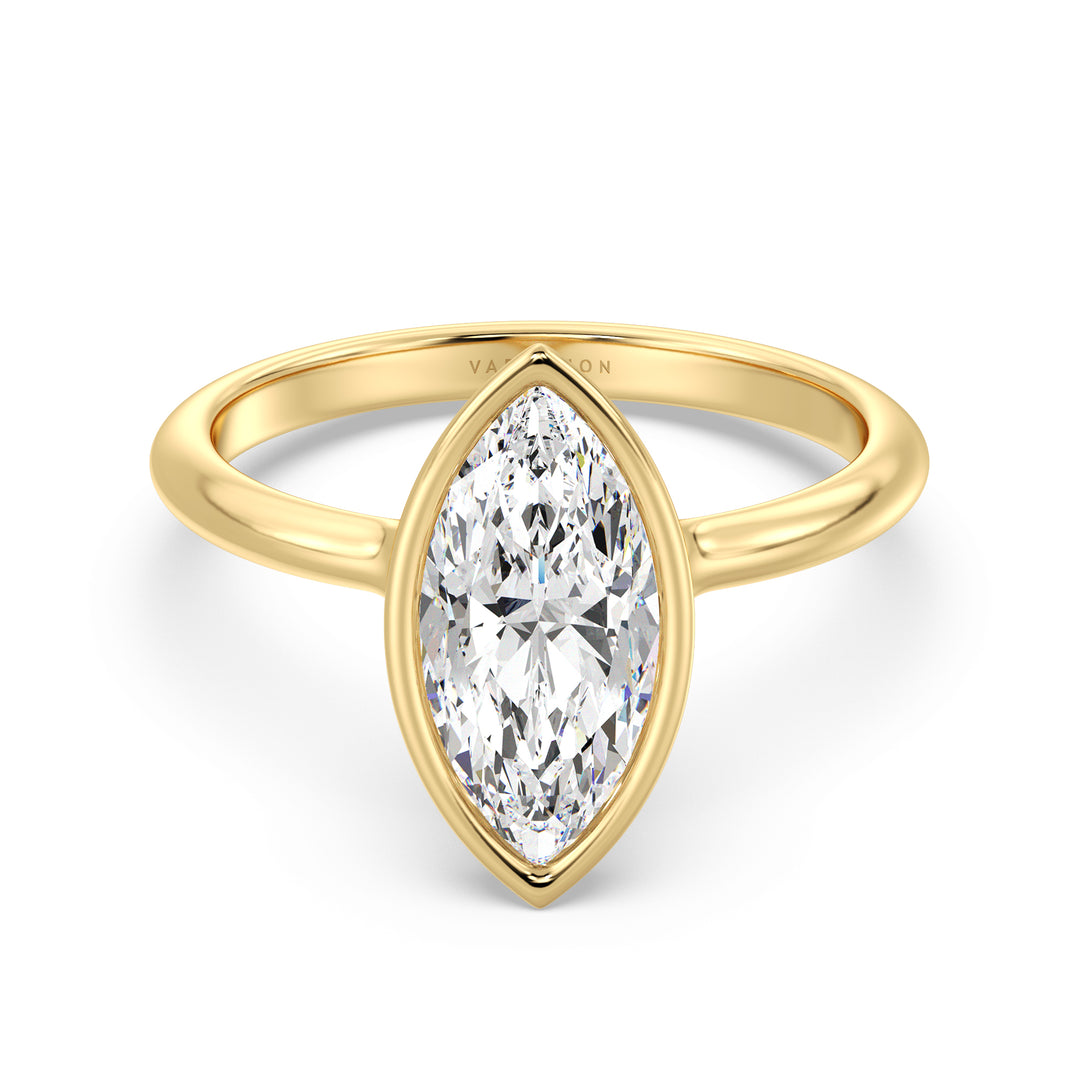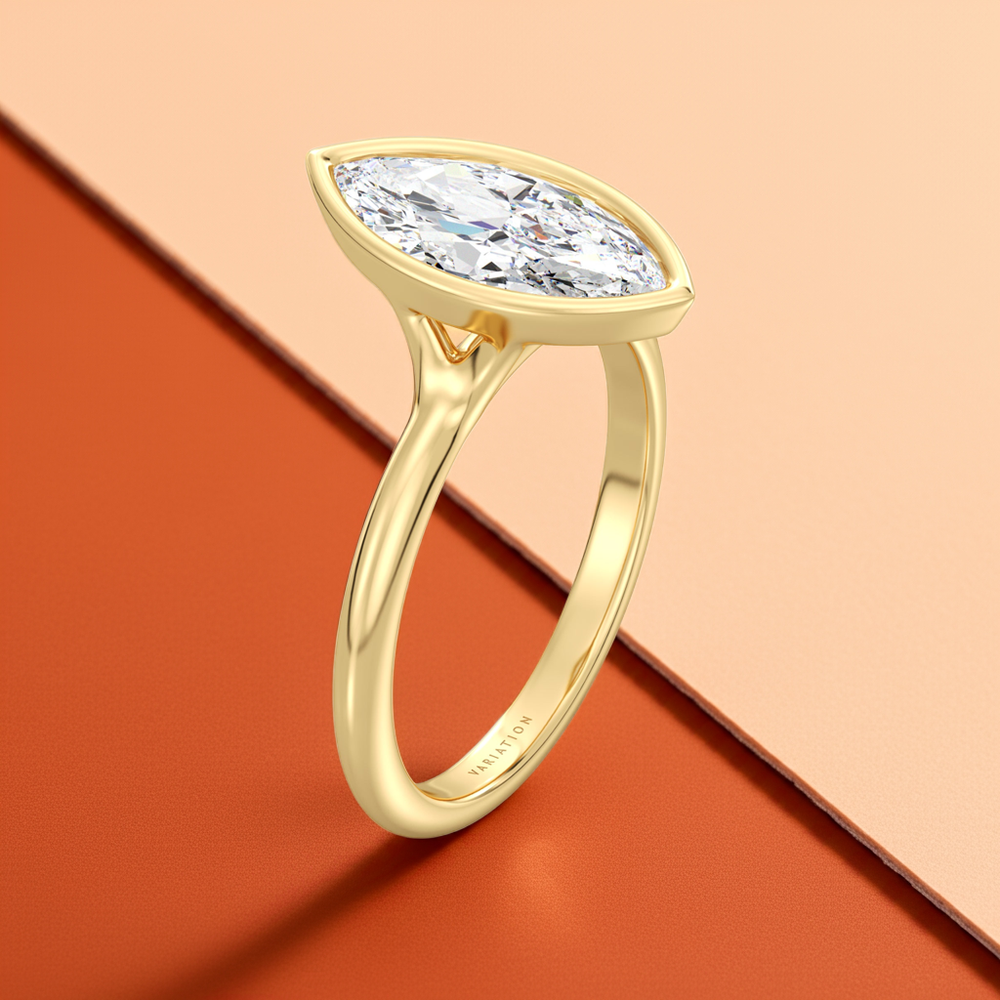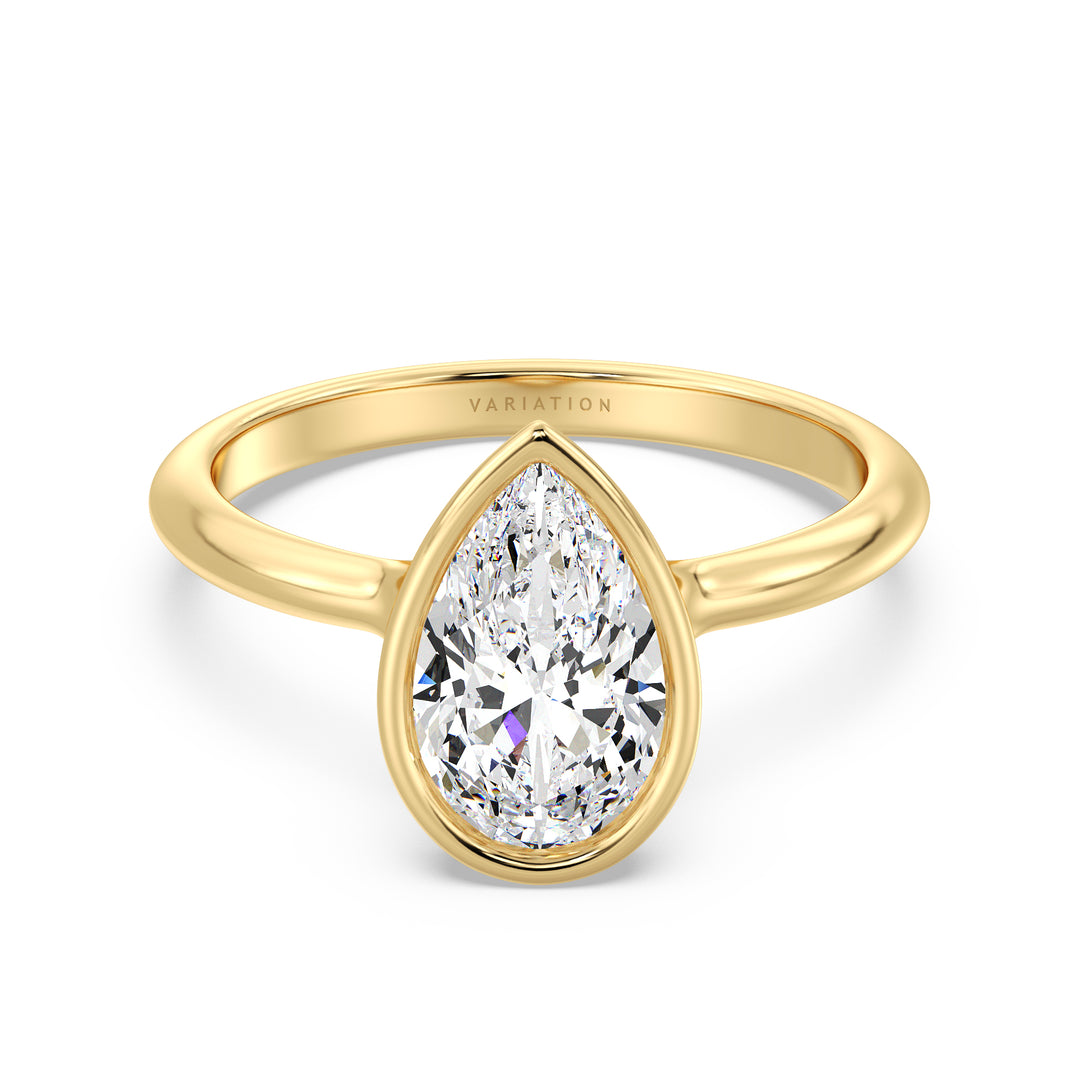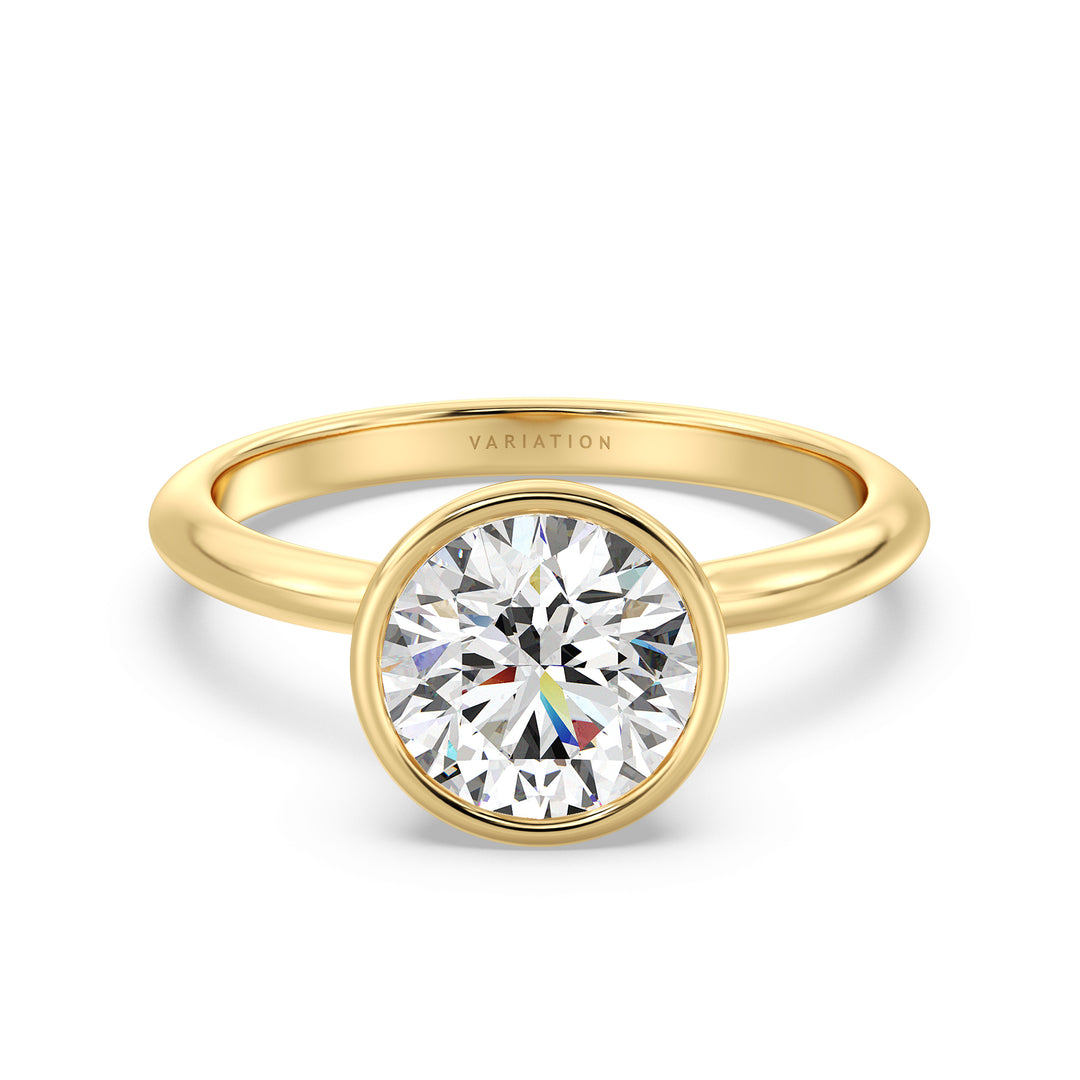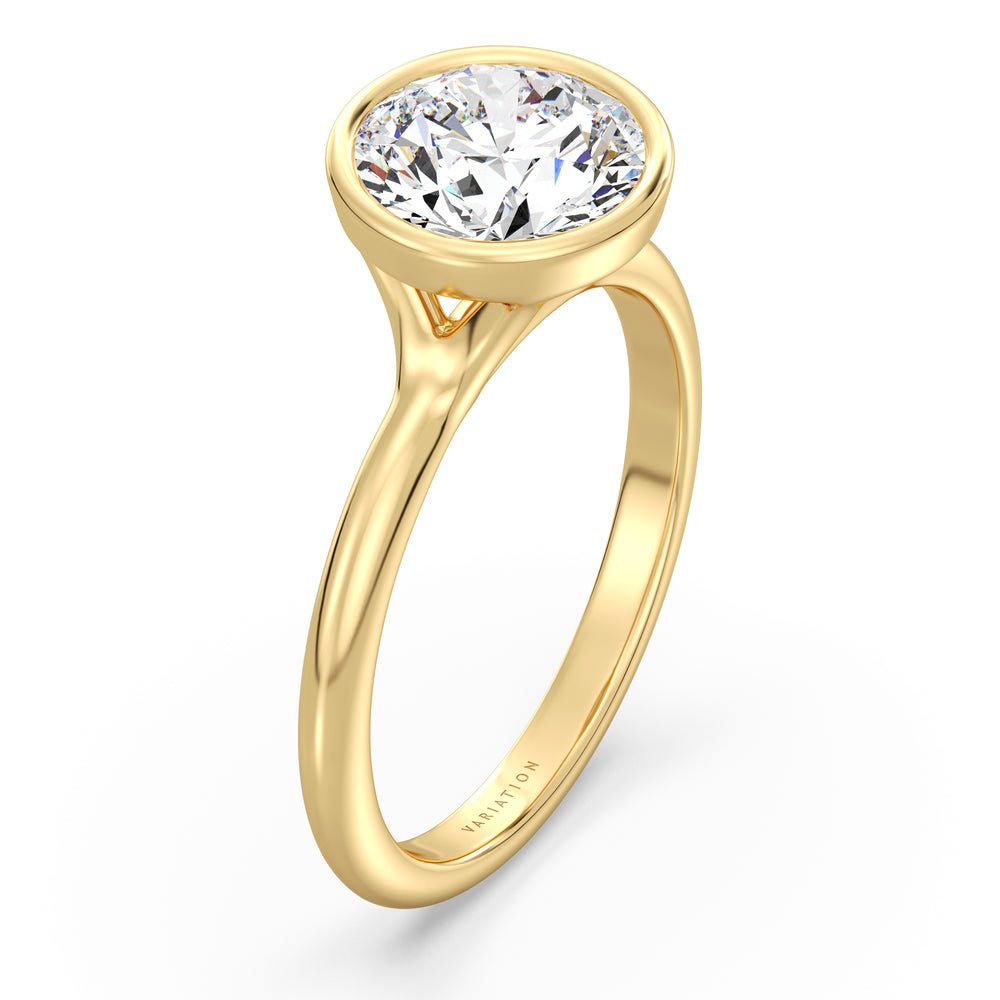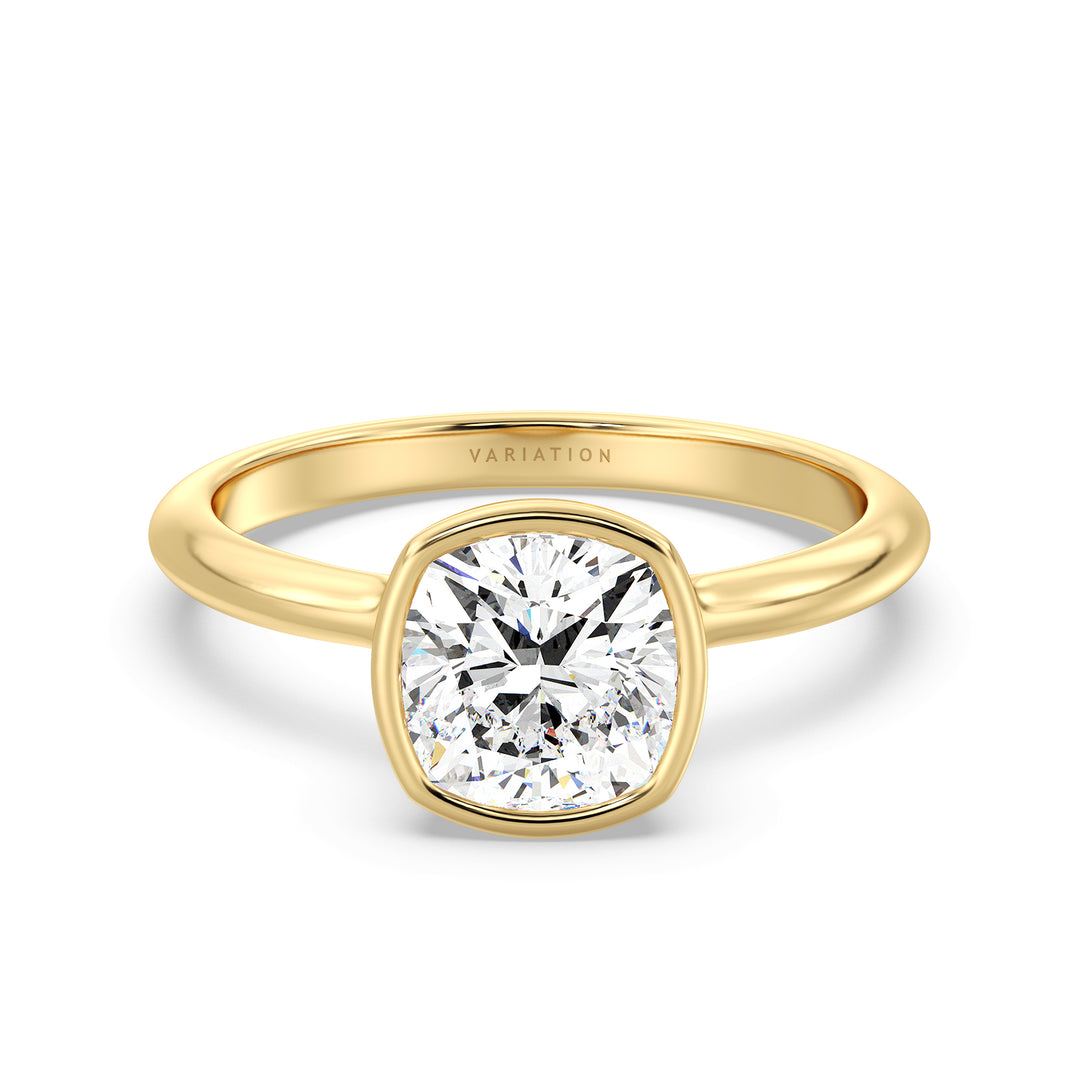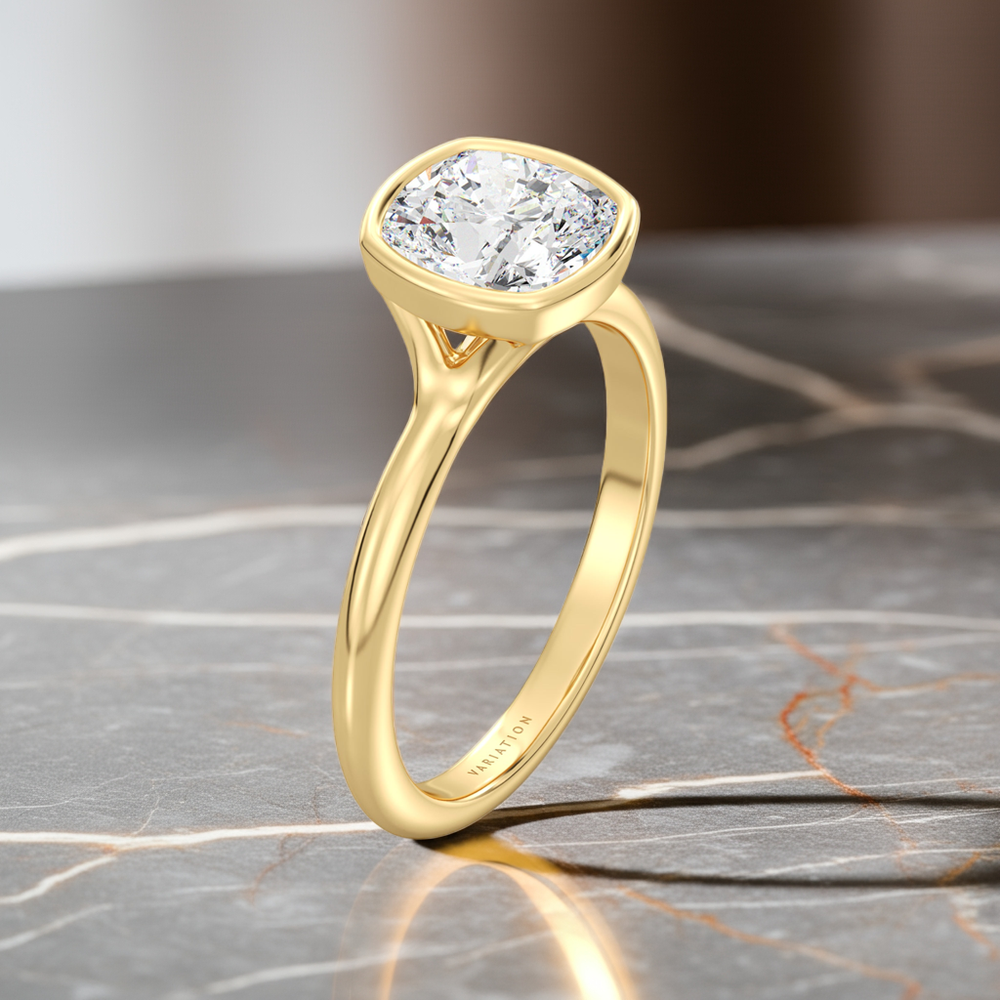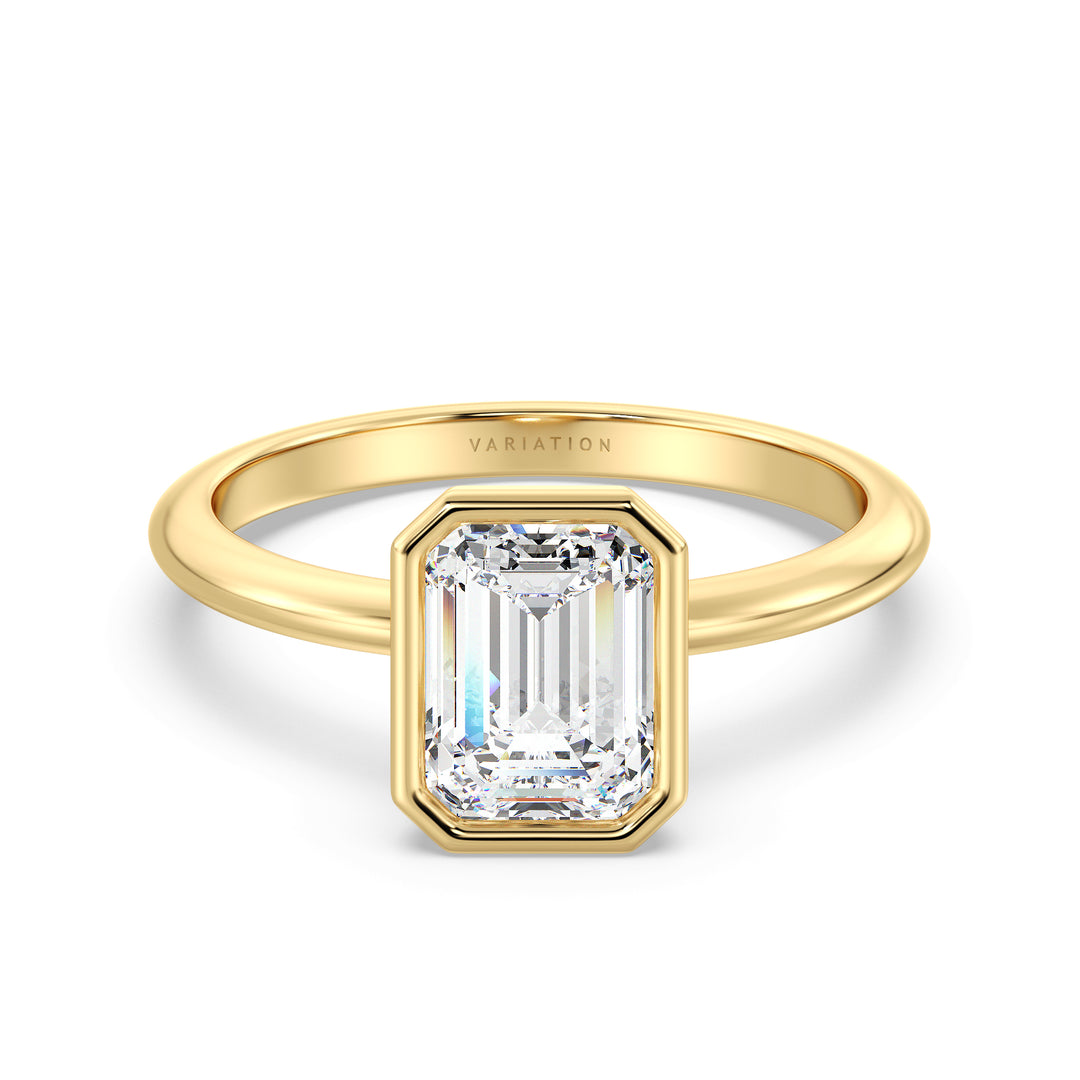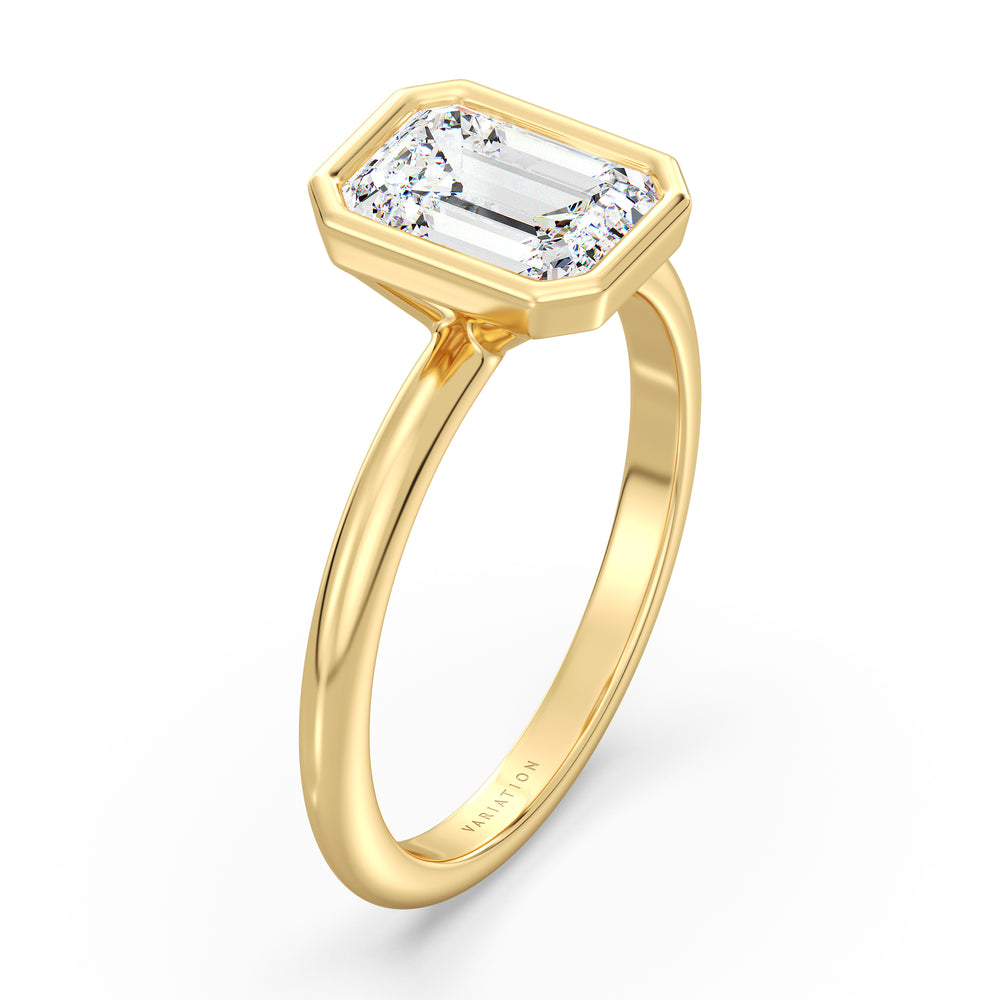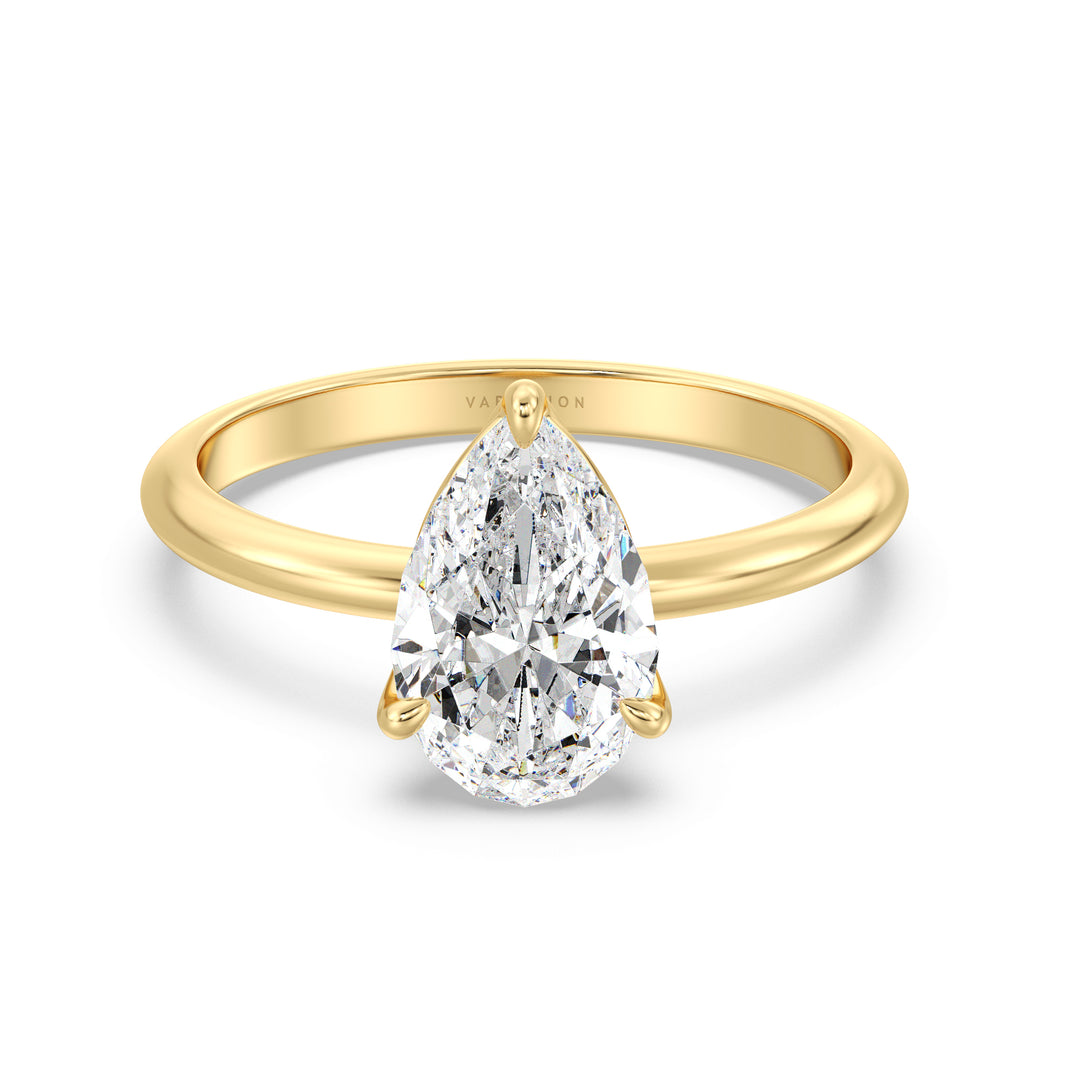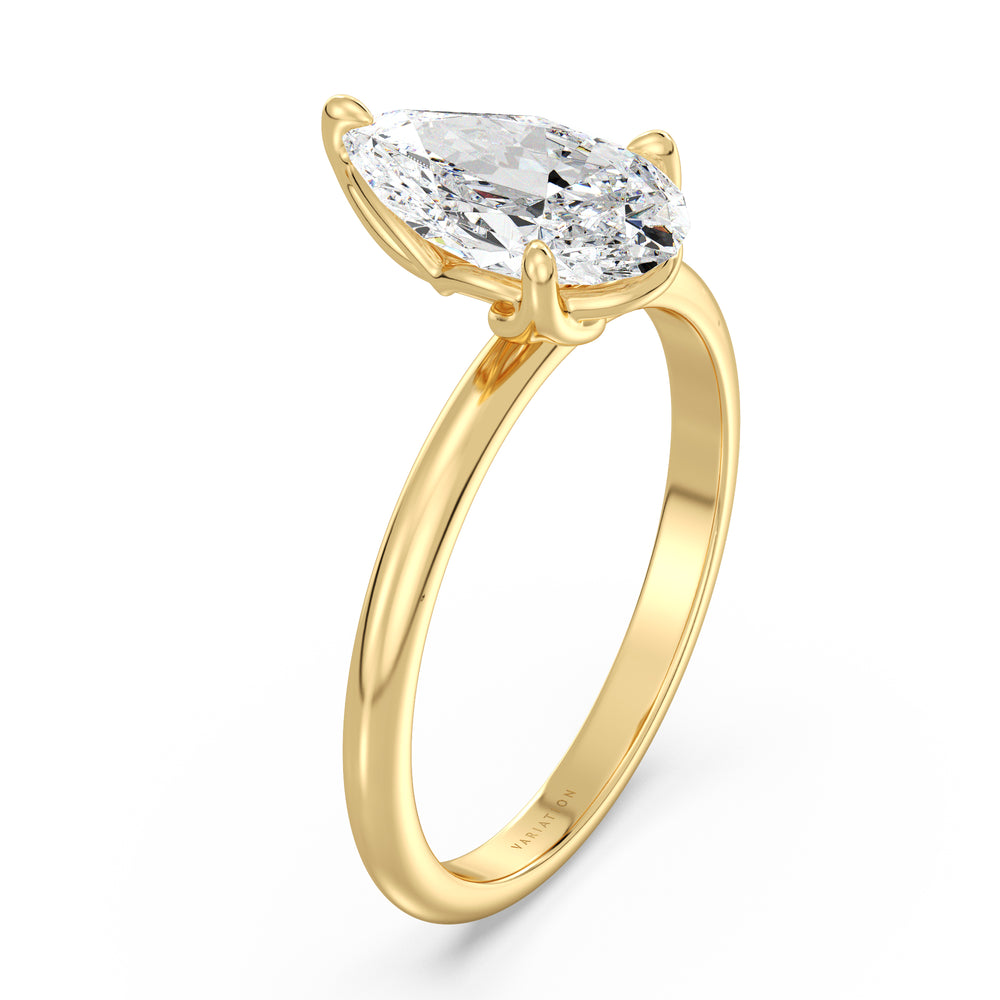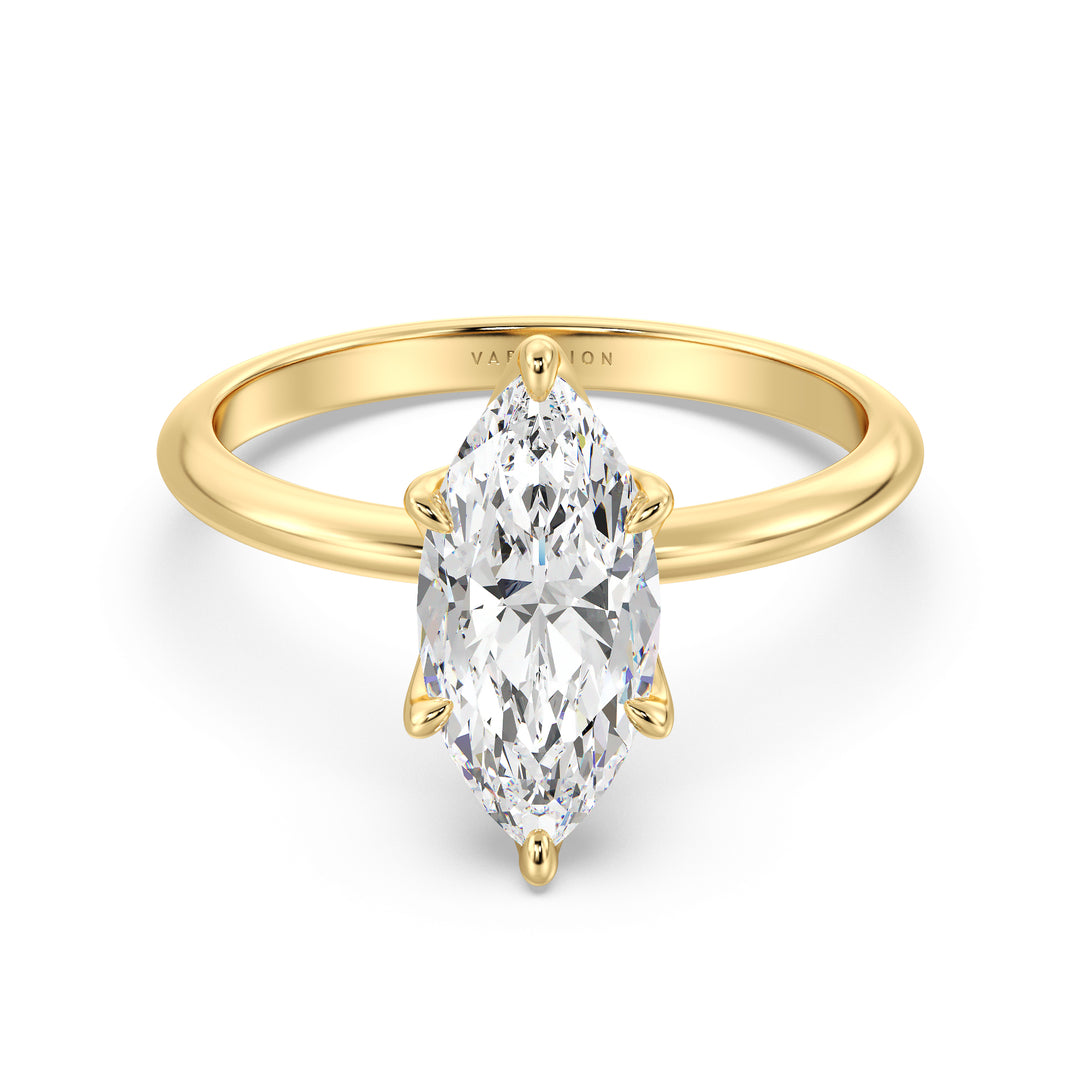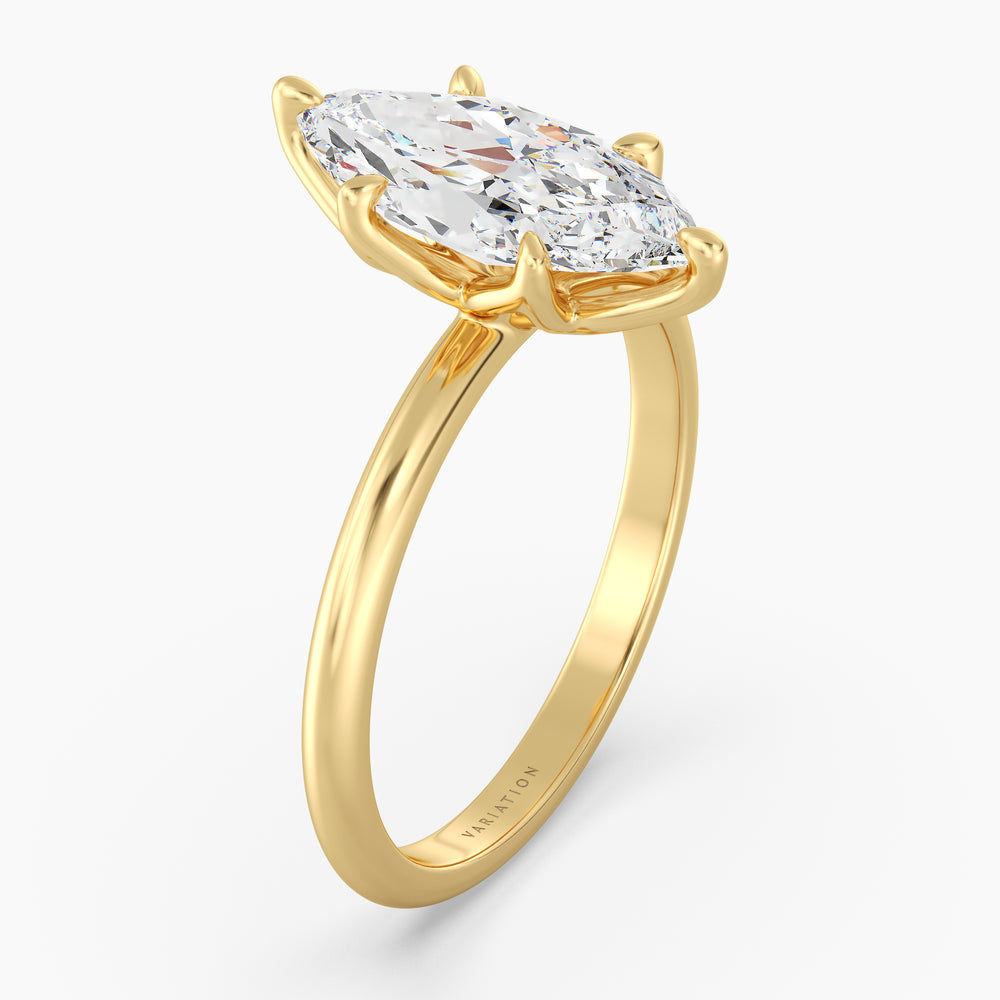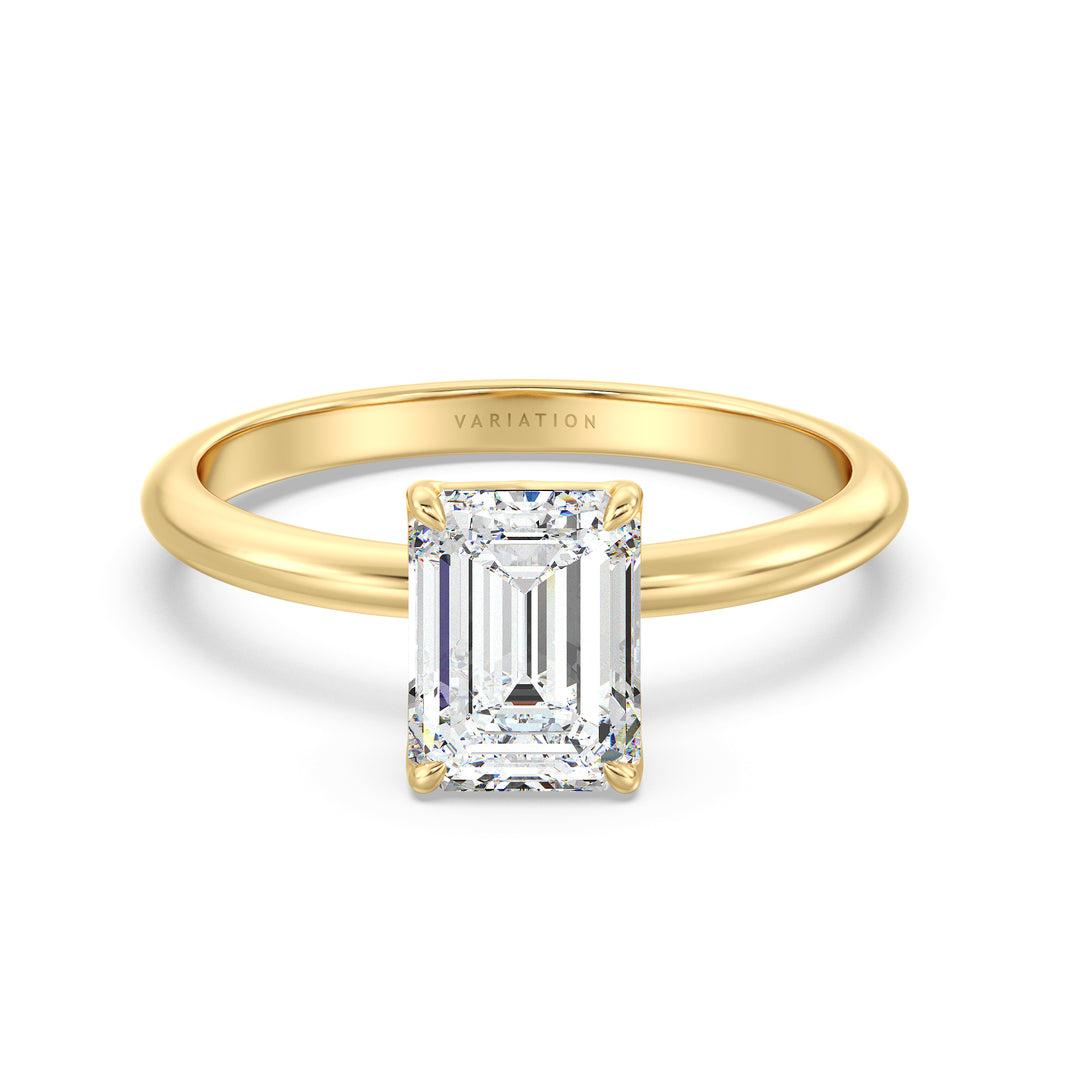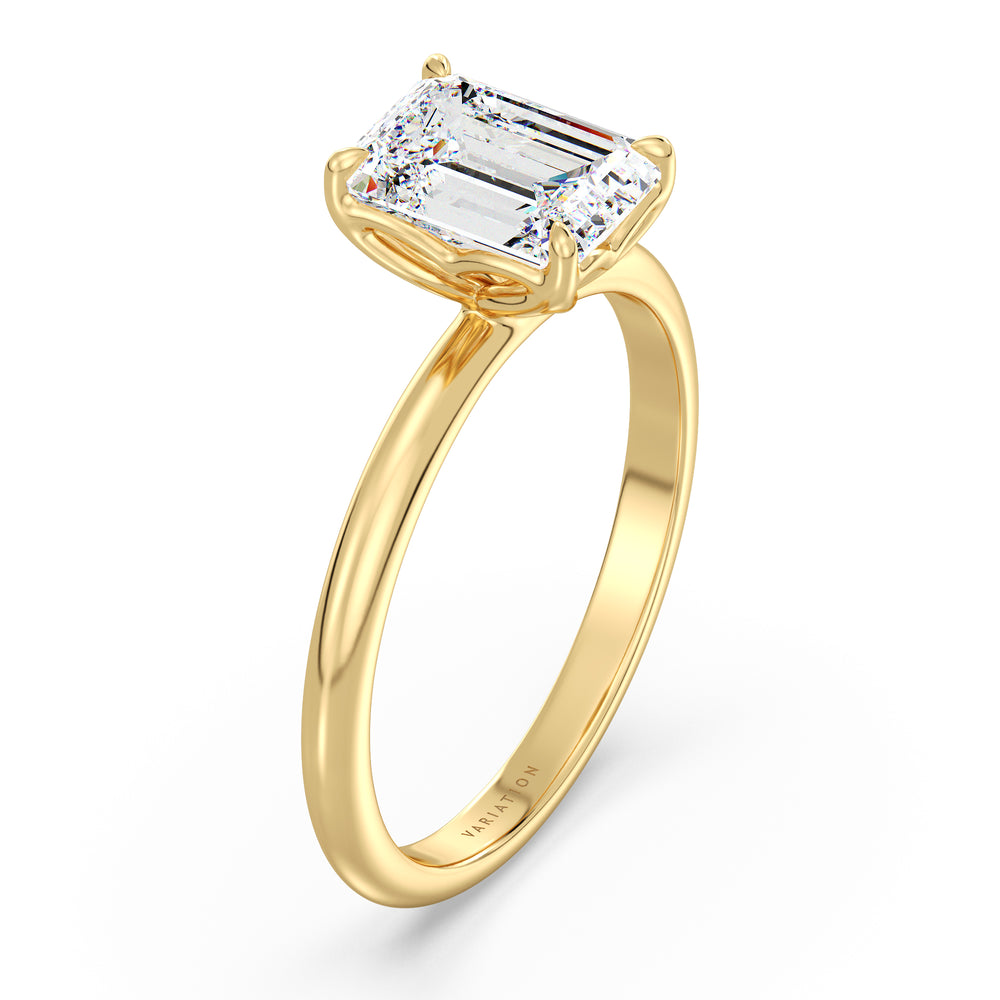About Lab Grown Diamond Engagement Rings
A Brilliant Beginning: Lab Grown Diamond Engagement Rings by Variation
Lab grown diamond engagement rings have become the preferred choice for couples across India who value timeless beauty, exceptional quality, and thoughtful luxury. At Variation, our Lab Grown Diamond Engagement Rings collection is curated for those who seek IGI-certified brilliance, refined craftsmanship, and designs that celebrate commitment with elegance and meaning. Each ring embodies sophistication, modern innovation, and the emotional significance of one of life’s most treasured moments.
Created using advanced technology that replicates natural diamond formation, our lab grown diamonds share the same structure, durability, and radiant sparkle as mined diamonds. With superior cut proportions, symmetry, and light performance, these engagement rings bring brilliance and elegance within reach of India’s new-generation couples.
Why Lab Grown Diamond Engagement Rings Are Loved by Indian Couples
Exceptional Brilliance with Unmatched Value
Lab grown diamonds allow customers to explore higher clarity grades, larger carat sizes, and premium cuts — all within a more accessible budget. This makes it possible to choose the engagement ring you truly love without compromise.
IGI-Certified Diamonds for Complete Trust
Each engagement ring features an IGI-certified diamond, with detailed grading for:
-
Carat weight
-
Colour
-
Clarity
-
Cut, polish, and symmetry
-
Diamond measurements
This ensures authenticity, transparency, and complete confidence when selecting the perfect ring.
A Modern and Meaningful Choice
Lab grown diamond engagement rings reflect conscious luxury, appealing to couples who value innovation, responsibility, and refined beauty. They offer the perfect blend of tradition and modern thoughtfulness.
Explore India’s Finest Designs in Lab Grown Diamond Engagement Rings
Variation offers an extensive range of engagement ring styles designed to suit every personality and love story.
Solitaire Engagement Rings
Timeless and iconic, featuring a single brilliant diamond that symbolizes pure commitment.
Halo Engagement Rings
A luminous centre diamond surrounded by a halo of smaller stones, creating enhanced sparkle and presence.
Three-Stone Engagement Rings
Representing the past, present, and future of your journey together — elegant and deeply meaningful.
Pavé Engagement Rings
A dazzling band of intricately set diamonds that adds sophisticated sparkle.
Vintage-Inspired & Contemporary Designs
From classic silhouettes to modern artistry, each design is crafted with precision and elegant proportions.
Every ring is meticulously finished, ensuring maximum light reflection, comfort, and long-lasting brilliance.
Crafted for Proposals, Celebrations, and Lifelong Wear
Lab grown diamond engagement rings are chosen across India for:
-
Proposals and engagements
-
Wedding ceremonies
-
Pre-wedding gifting
-
Anniversary upgrades
-
Personal milestone celebrations
Their sparkle, symbolism, and refined beauty make them cherished pieces that carry a lifetime of meaning.
Craftsmanship Inspired by India’s Jewellery Heritage
Variation combines advanced technology with meticulous craftsmanship to ensure:
-
Secure, elegant settings
-
Excellent symmetry and balanced proportions
-
Smooth, comfortable finishing
-
Strong brilliance under all lighting conditions
Each ring reflects a perfect blend of India’s rich jewellery culture and contemporary elegance.
Why Variation Is India’s Trusted Destination for Lab Grown Diamond Engagement Rings
Superior Craftsmanship & IGI Certification
Precision setting, exceptional finishing, and certified authenticity for complete peace of mind.
Nationwide Delivery Across India
Serving customers in Mumbai, Delhi NCR, Bangalore, Hyderabad, Chennai, Kolkata, Pune, Ahmedabad, Jaipur, Surat, and beyond.
Premium Online Shopping Experience
Clear diamond details, secure checkout, and expert guidance provide confidence in every step of your engagement ring journey.
Shop Lab Grown Diamond Engagement Rings Online in India
Variation invites you to begin your forever with brilliance, elegance, and modern value. Whether you're planning the perfect proposal or choosing a ring together, our Lab Grown Diamond Engagement Rings offer beauty, clarity, and craftsmanship that honour the significance of your moment.
Discover engagement rings crafted for India’s new era of love — where tradition meets contemporary brilliance.


